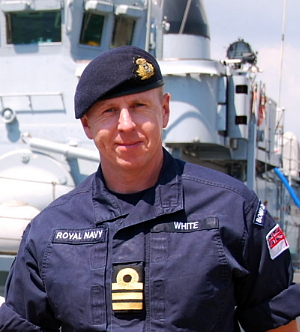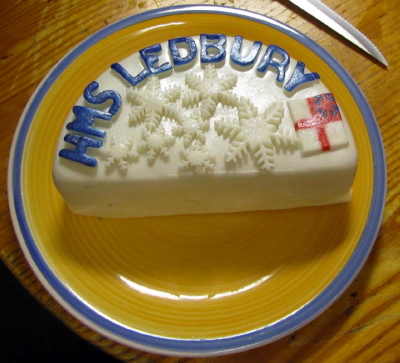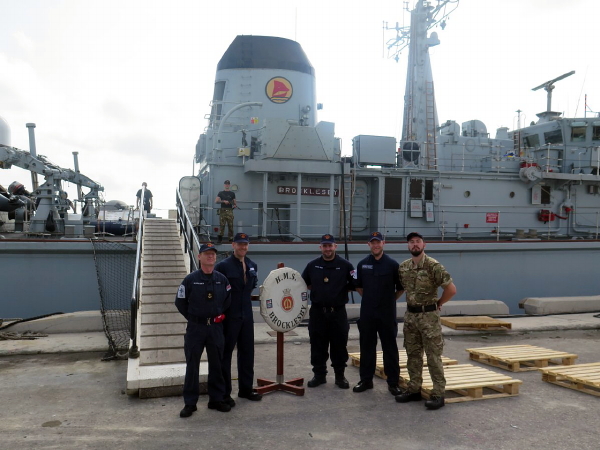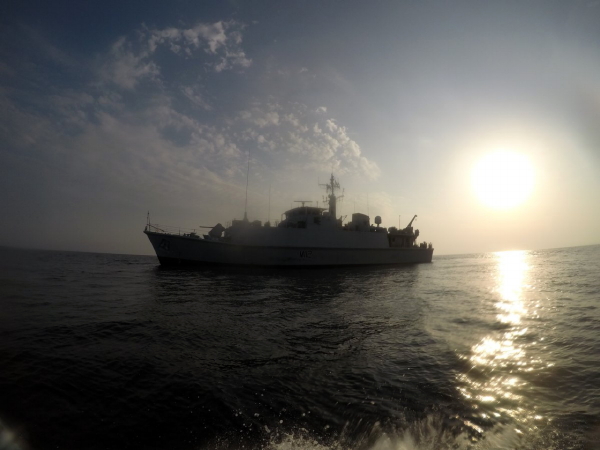
Items from The News, Navy News and Warship World are reproduced by kind permission of David Brown, Sarah Fletcher and Steve Bush respectively. Click on the thumbnails to enlarge them.
21 Mar 19 - Latest issue of Rope Signal from the HDS

I have adjusted the latest issue of Rope Signal, the newsletter of the Historical Diving Society (HDS), for ease of reading here (click to expand). Helen Rutherford is married to MCDOA member Maj Les Rutherford RE, a retired Sapper diver and EOD specialist.
The newsletter announces a significant milestone for the society's Diving Museum in being recognised by the Arts Council as a fully accredited museum. The origins of this magnificent achievement are mostly down to the museum's founder, MCDOA member Dr John Bevan, who is also founding Chairman of the HDS, a record-breaking ex-Royal Naval Scientific Service* diver, prolific author, editor of Underwater Contractor International magazine and a trustee of Project Vernon, the non-profit charity adopted by the MCDOA and endorsed by the AORNFCD, TCA, RANCDA and, most recently, the RNCDA** to erect a Minewarfare & Diving Monument at Gunwharf Quays on the former site of HMS Vernon.
These photos show the challenge confronting us in No.2 Battery at Stokes Bay in 2010 with John Bevan pictured in the first (see entry for 22 Aug 10 plus others in News Archive 31):
It certainly looks different now.
Apart from John Bevan, much of the credit for this latest coup belongs to the HDS's hard-working band of volunteers and supporters, especially to ex-CD Mike O'Meara, Vice Chairman of the HDS, who performed the lion's share of the complex paperwork needed to convince the Arts Council that the museum complies with its exacting standards.
Mike O'Meara with John Bevan at an MCDOA Dinner
Mike O'Meara plus other HDS Museum volunteers
Congratulations, Mike, and thank you for your selfless efforts.
I was personally saddened to read of the death of Capt Jim Vorosmarti MD USN, a world-renowned specialist in underwater medicine. Exceedingly witty and intelligent, he was a true gentleman whom I greatly admired and respected. I had the privilege of sharing a platform, and later a dinner table, with him at the HDS Conference in Poole in 2011 and again in 2015.
Jim Vorosmarti presenting at HDS Conference
in Poole in October 2011
Yours Truly (Rob Hoole) with Jim Vorosmarti at HDS Annual Dinner
in Poole in October 2011
Jim Vorosmarti (near right) at HDS pre-Conference Speakers' Dinner in Poole
in October 2015 with John Bevan, Mike O'Meara and Yours Truly (Rob Hoole)
When the late John Hendrick, a former MCDO, suffered a stroke at the HDS Annual Dinner in Southsea in November 2010, Jim sprang into action and gave him the treatment he needed until the paramedics arrived. John subsequently recovered and Jim's prompt action may well have prolonged his life until he eventually crossed the bar in July 2017.
I am sure all members of our community will join me in extending our sincere condolences to Jim's family, friends and colleagues.
* The Royal Naval Scientific Service
"The Royal Navy had sponsored and carried out a good deal of scientific research in the nineteenth century, and a number of establishments such as HMS Vernon and the Admiralty Experiment Works had been set up, but the forerunner of the Royal Naval Scientific Service was the Board of Inventions and Research, established in 1915 to initiate, investigate and advise on proposals for the application of science and engineering to naval warfare, including inventions sent to the Admiralty by members of the public. In 1918 it became the Scientific Research and Experiment Department and in 1946 the Royal Naval Scientific Service...
With the formation of a unified Ministry of Defence in 1964 the RNSS was replaced by the Department of the Chief Scientist (Navy) and the constituent headquarters directorates gradually lost their separate identity..."
** RNCDA Endorsement of Project Vernon
As minuted on its website, the RNCDA unanimously agreed at its Third AGM, held on 14 October 2017, that it "...would support the Vernon Project and help raise funds towards its completion. These amounts would be on a case by case decided by the committee."
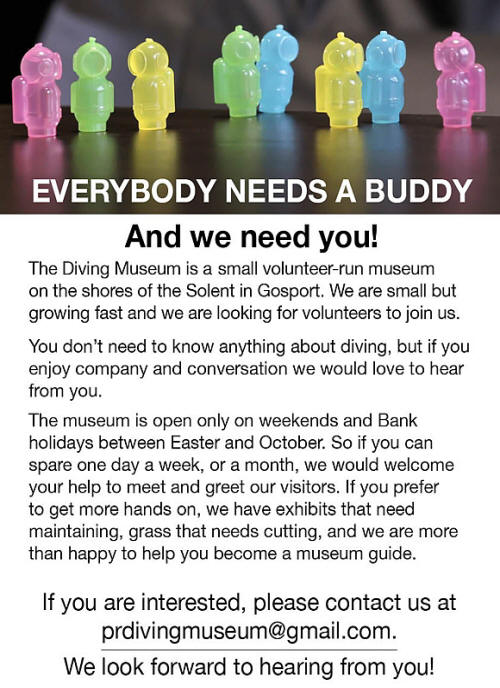
20 Mar 19 - Recent tweets
Click on the linked dates to see all associated photos and videos.
HMS Bangor (MCM1 Crew 8)
11 Mar 2019 - A rare bit of Scottish sunshine gave TweetO a chance to snap HMS Grimsby with the snow capped mountains in the distance. Our sister ship is currently training with FOST to make sure they’re ready to fight and win.
HMS Blyth (MCM1 Crew 1)
14 Mar 2019 - One of our crew keeping watch. We remain vigilant on operations at all times in the Middle East.
HMS Brocklesby (MCM2 Crew 8)
15 Mar 2019 - Red noses have invaded today! The ship's company spent time raising money for Comic Relief with a cake sale.
11 Mar 2019 - With a Ship's Company from across the UK and Commonwealth, we are in Bahrain celebrating Commonwealth Day,
11 Mar 2019 - Thank you to the Learning & Development team for sending out language resources for Ship's Company. Being able to speak another language helps our Sailors to interact with our allies across the world.
5 Mar 2019 - Chefs reunited in the Royal Navy. Two Ex Gurkhas now chefs serving together within HMS BROCKLESBY's Crew.
HMS Chiddingfold (MCM2 Crew 2 commanded by MCDOA member Daniel 'Doc' Morris)
7 Mar 2019 - Basin Trial successful. Well done the marine engineers. Still some work to do; Crew 2 are working into the weekend to get the job done.
HMS Hurworth (MCM2 Crew 7)
8 Mar 2019 - Happy international women’s day from HMS Hurworth! Our XO who is also the ships Mine Clearance Diving Officer having fun as she brings the ship in.
HMS Ledbury (MCM2 Crew 1)
15 Mar 2019 - What a tremendous and proud achievement as we accomplished rowing a total of 710 nautical miles and raising a staggering £4200 for SANDS: Stillbirth and neonatal death charity.
A special thanks to 'Dickie' Davies for organising such a great 24 hour event.
15 Mar 2019 - Watch below as we counted down the end of 24 hours of rowing, all for the SANDS charity. Its still not too late to contribute at the Just giving page. https://bit.ly/2u4rSIM
15 Mar 2019 - Almost finished the Row challenge when Vice Admiral Malloy can over to support our SANDS charity row.
"Sir, Thank you for your support"
14 Mar 2019 - Over half the distance covered already. Go Ledbury. All in aid of SANDS. Help our great effort.
Just Giving page. https://bit.ly/2u4rSIM
14 Mar 2019 - We are raising money for SANDS the stillbirth and neonatal death charity.
You can contribute through the Just Giving page. Search: Joshua Beale - Row the Gulf.
HMS Middleton (MCM2 Crew 4)
18 Mar 2019 - Looking forward to welcoming you onboard the mighty MIDD! We may be small, but we bring a lot to the party.
ACSC 22
18 Mar 2019 - As part of MCP19, UKACSC will visit a number of Royal Navy ships to learn more about their capabilities and what life is like on-board. You can find out more about the RN Fleet here: https://bit.ly/2z4V2v9
14 Mar 2019 - Great to see our new sailors getting to grips with basic military skills. No matter whether chef, engineer, warfare or aviator, these basic skills underpin our professional Royal Navy.
HMS Raleigh
14 Mar 2019 - Military training week and the Gould 35s have been getting to grips with how to safely handle, clean and fire a SA80 assault rifle.
6 Mar 2019 - Although we are still finishing up a maintenance period,- there’s plenty of time to hone our other skills before heading to FOST. We’ve been in the simulators at HMS Collingwood practicing day and night pilotage.
6 Mar 2019 - A great opportunity at an early stage to learn teamwork and leadership, essential no matter what branch you join - well done all!
HMS Raleigh
6 Mar 2019 - We’ve also selected the Gould 35 management team. Congratulations to the newly appointment class leaders, deputy class leaders and mess bosuns.
HMS Ramsey (MCM1 Crew 2)
18 Mar 2019 - Dressing lines rigged? Navigation lights on? All departments ready? Final cleaning complete? HMS Ramsey ready for her Material and Safety Check with FOST MPV.
15 Mar 2019 - It was a great pleasure to host Admiral Lanba, CNS Indian Navy, on board HMS Ramsey today as part of his visit to the UK, strengthening the relationship between the Royal Navy and the Indian Navy.
11 Mar 2019 - Happy Commonwealth Day to all 53 member states and more importantly our friends.
8 Mar 2019 - Celebrating International Women’s Day on board HMS Ramsey. AB(MW) Halsall is one of our team who ensures we deliver on operations protecting the UK’s interests at home and overseas.
6 Mar 2019 - HMS Ramsey exchanging her ID with HMS Hurworth. Flashing light signals were the Royal Navy’s secondary means of communications after flag signals and are still used during times of radio silence or spoofing.
6 Mar 2019 - “SHIP IS IN POSITION - LET GO!” HMS Ramsey anchoring in the Scottish Exercise Areas. This is our Navigating Officer’s favourite seamanship evolution.
5 Mar 2019 - “CARRY ON WITH THE SWIMMER!” Action shots of HMS Ramsey conducting a man overboard exercise.
MASTT (Maritime Autonomous System Trials Team commanded by MCDOA member Dave Stanbury)
15 Mar 2019 - Another successful week for MASTT! Four new Operators and one new Operator/Supervisor in the Fleet!
14 Mar 2019 - Gusty winds may have hampered R100 training for MASTT this week, in Portsmouth Hbr, but it has not dampened spirits or the desire for knowledge!
13 Mar 2019 - MASTT heavily engaged in the R100 L1&L2 Maintenance module of the Course today, at HYDROID Europe, Portchester.
11 Mar 2019 - Another week, another training course for the members of MASTT! REMUS 100 Operator/Maintainer Course. More news to follow!
HMS King Alfred
19 Mar 2019 - Congratulations to everyone awarded their Initial Minewarfare Course certificate this weekend!
Well done to reservists from HMS King Alfred, HMS Calliope, HMS Wildfire, HMS Vivid & HMS Flying Fox. Welcome to a Reserve career in a great branch supporting Royal Navy mine clearance!
Grey Funnel Line
13 Mar 2019 - HMS Penzance [MCM1 Crew 4] has completed a 10-month refit.
19 Mar 19 - Yet more memories of Overseas Long Minewarfare & Clearance Diving Officer (OLMCDO) Courses
I am grateful to Rear Admiral Allan du Toit RAN for this addition to the entry for 16 Mar 19:
"Good morning Rob,
Here is the 1971 OLMCDO course photo from Andrew Rennie as promised. The course included officers from Burma, India, Iran, Norway, Singapore and South Africa. Andrew tells me that Lt Rosengrew, or 'Rosie' as he was known, was by far the best diver on course - a true Viking!
Only too pleased to help. I served in SAS Pretoria (1975) as a midshipman under training, SAS Windhoek as Gunnery Officer and subsequently SAS Durban on two separate postings as Navigator and First Lieutenant. I was subsequently relief CO of SAS Durban for three months in 1984. All my minehunter time in the SAN was spent as MHCO and then First Lieutenant in the brand new German designed River class minehunters which were fitted with Thomson 2021 sonar and PAP MDVs.
Keep up the great work.
Best wishes,
Allan"
More discussion of OLMCDO '71 is available in the entry for 30 Jul 14 in News Archive 47.
From MCDOA member David Burstall:
"Hello Rob,
Re the 1971 Overseas LMCDO Course, you have a lieutenant from the Imperial Iranian Navy, Lieut Nayeri, but I did not know him. He was long after my time as I left Iran in about 1961 after two years there, having taken over from Mike Gillam.
Whilst I later had time as I/Diving in 1969, again I left before Nayeri joined. We did however have a Petty Officer from the IIN undergoing training as a CD1. He was the victim of a horrendous accident when the portable chamber, in which he was decompressing suddenly blew its door off, subjecting the diver to explosive decompression. The poor chap died. I can't remember his name, nor what the final finding was of the Board of Enquiry. At that time I believe I was either the First Lieut of HMS Vernon or involved in re-writing the Diving Manual, shortly before retiring.
Regards,
David"
18 Mar 19 - Cover art received for latest minewarfare book
Your humble webmaster has received a preview of the cover of 'Enemy Waters', the third and final book of the trilogy I have co-authored with Cdr David Bruhn USN that covers naval minewarfare during the First and Second World Wars. 'Home Waters' and 'Nightraiders', the first two books of the trilogy, have already been published (see entry for 9 Jan 19).
This is the text on the back cover:
Enemy Waters
Royal Navy, Royal Canadian Navy, Royal Norwegian Navy, U.S. Navy, and Other Allied Mine Forces Battling the Germans and Italians in World War II
When Britain declared war on Germany in September 1939, the Royal Navy was deficient in minelayers needed to try to hold enemy forces at bay and out of its home waters. Turning first to the Merchant Navy, it requisitioned a liner and two ferries for this use, and a dozen destroyers and submarines were also converted to carry mines. Later, six fast minelaying cruisers joined the force.
When Italy entered the war on the Axis side in June 1940, the situation became dire. As U-boats continued to sink shipping in the North Sea and around the British Isles, the Italian Fleet and German and Italian Air Forces controlled the central Mediterranean. Royal Air Force Bomber and Coastal Command planes took up mining, as did old Swordfish bi-planes of the Fleet Air Arm.
Joining in the fight were units of exiled navies, including the Dutch minelayer Willem van der Zaan, Free French submarine Rubis, and the Norwegian 52nd Motor Launch Flotilla. U.S. Navy mine forces supported the invasion of French North Africa in late 1942, subsequent landings in Italy, and the invasions of Normandy and southern France. The Canadian 31st Minesweeping Flotilla was at Normandy, and joined in later operations.
Enemy Waters puts readers in the heart of the action. One hundred and forty-five photographs, maps, and diagrams; appendices; and an index to full-names, places and subjects add value to this work.
MCDOA past-President Paddy McAlpine has kindly written one of the forewords to 'Enemy Waters', as he did for 'Home Waters':
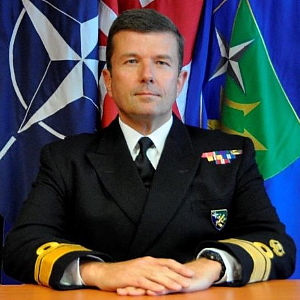
Rear Admiral Paddy McAlpine CBE
Foreword
Enemy Waters, the third book in the excellent Mine Warfare trilogy by Commanders Bruhn and Hoole will evoke many memories for those who have served at sea and experienced the challenges posed by sea mines, whether they are modern and newly laid or still highly dangerous WWII relics.
Having joined the Royal Navy to dive in an attempt to emulate my childhood hero Jacques Cousteau (that amazing military leader, scientist, film maker and inventor of the aqua lung), I eventually found myself as a newly qualified Mine Clearance Diving Officer (MCDO) and Operations Officer on board HMS Chiddingfold, a Hunt-class mine countermeasures vessel. We were preparing to deploy to the Persian Gulf in a small task group that included HMS Berkeley, commanded by co-author of this excellent book, Rob Hoole. A hugely experienced and capable MCDO during his active service, Rob has gone on to thrive as a successful author as well, a widely acknowledged and a highly respected naval historian, specialising in mine warfare and diving.
Working up in the middle of the English Channel before we deployed to relieve the other RN Minehunters that were keeping the Strait of Hormuz open at a time of increasing tension, we started the day off as we usually did with System Operator Checks or “SOCs.” A chance to turn all the gear on and test it with the maintainers ready to finely tune it up was always welcome. We slowed down to mine hunting speed, turned on the 193M Sonar and, purely by chance, discovered a very solid sonar contact on which to run out the submersible. As soon as the Chief Petty Officer Mine Warfare saw the sonar contact, his mine hunting antenna was immediately raised. “That’s a mine!” We launched the submersible, got it into position and with about ten metres to run, turned on the searchlight and video recorder. Into view came a fully intact, German WWII mine. After the usual reactions and preps, the divers went down to neutralise the threat.
As interesting a start to the morning as this was, it was not the first and certainly was not to be the last intact WWII sea mine found in the English Channel during that year and in every year since. They continue to turn up today during similar chance encounters, or in trawlers’ nets, or are uncovered on the beaches at extremely low tides; and mine warfare and diving specialists from the navies on both sides of the Channel continue to regularly deal with old WWII ordnance.
Mines, old or new, remain a potent weapon in wartime and a threat to all shipping once the shooting ashore has ended. During WWII the Channel was strewn with them and for very good reason. This relatively cheap-to-manufacture weapon always achieves a high return on investment if offered a target. Countering the mine threat must be part of every amphibious plan to open the approaches to chosen landing areas for the amphibious forces and provide access to the ports and harbours for supporting shipping and follow-on forces once the battle has moved inland. This book not only reinforces this point but also reminds those designing the navies and amphibious forces of the future that ignoring the lessons of the past would be folly.
Paddy McAlpine CBE
Rear Admiral Royal Navy (Retired)
'Enemy Waters' will be printed and published within the next couple of months. Watch this space.
As with 'Home Waters' and 'Nightraiders', the £10 profit from the sale of each personally signed copy of 'Enemy Waters' will be donated to Project Vernon, the installation of a monument in Gunwharf Quays in Portsmouth, formely the location of HMS Vernon, to commemorate the establishment and celebrate the work of members of the minewarfare & diving community - past, present and future. Proceeds to date have added £1,500 to the kitty (over £250k raised so far) but more is needed for Phase 2, the means by which the monument's full significance will be explained to the annual footfall of 8 million visitors who will see it.
17 Mar 19 - Exciting News for Project Vernon

Talented sculptor Mark Richards has been awarded the commission to design, create and install the Vernon Minewarfare & Diving monument and a contract has been signed with a “Ready for Installation” date of 1 March 2020.
Mark’s one-and-a-quarter scale structure will take the form of a British Mk 17 moored mine complemented by two divers wearing equally iconic CDBA (Clearance Diver Breathing Apparatus). Respectively, these elements will represent members of the mine warfare & diving community and celebrate their work - past, present and future.
The sculpture will stand proud of the surface of Pool B which is the middle of the three basins leading from the main gate in Gunwharf Quays, the residential, retail and marina development in Portsmouth. This was previously occupied by HMS VERNON, the Royal Navy’s alma mater of mine warfare & diving and base for mine countermeasures vessels. Here, it will be seen by a footfall of 8 million visitors per year. An artist’s impression of the monument in situ will be released shortly.
Mark Richards 'measuring up' in Pool B at Gunwharf Quays in October 2018
It is intended to dedicate the monument next spring in the presence of a VVIP. In the meantime, fundraising continues for Phase 2, the means by which everything the monument signifies will be explained to the public.
Mark Richards has started publishing a blog to update supporters on his progress which will be available at: http://vernonmonument.blogspot.com
Other examples of his work can be seen at: www.markrichards.eu
Project Vernon has been adopted by the MCDOA and endorsed by the AORNFCD, TCA, RANCDA and, most recently, the RNCDA at its AGM in October 2017. As chronicled on this website, it has been a long slog to coax the money out of people but the end is finally in sight. A huge thank you to all Project volunteers and other supporters.
Postscript: The latest newsletter is available here:
Project Vernon Newsletter 24 March 2019
16 Mar 19 - More memories of Overseas Long Minewarfare & Clearance Diving Officer (OLMCDO) Courses
I am grateful to Rear Admiral Allan du Toit RAN for this response to the entry for 21 Feb 19:
"Dear Rob,
Trust that all is well with you.
I just read the MCDOA 'Latest News' with much interest as always. I noted the OLMCDO course photos, in particular the photo of OLMCDO Course ‘66, which featured Lt L.J. (Woody) Woodburne, SAN (arms folded), who topped the course.
After serving as OIC of the Diving School in Simon’s Town on his return from the LMCDO course at HMS Vernon, he went on to command two Ton class minesweepers [SAS Mosselbaai and SAS Johannesburg] before volunteering to become a submariner, commanding the second of the SAN’s new French-built Daphne class submarines, SAS Emily Hobhouse, on her commissioning in 1971. While in command of Emily Hobhouse, Woody became one of only two South Africans to ever be awarded the Van Riebeeck Decoration, the highest South African decoration in the field, which he received for conducting Special operations.
Woody went on to have a very distinguished career in the SAN, culminating in his promotion to Vice Admiral and appointment as Chief of the Navy from 1990-92. He passed away in 2013 after a long battle with a degenerative disease.
Additionally, I have also reviewed the QDD, CDO, MCDO and MWO List to see if there were any obvious SAN officers missing. There are two that I am aware of.
Firstly, Lt M.A. (Andrew) Rennie (Capt SAN and subsequently Cdr RAN) who did the OLMCDO course in 1971. Andrew tells me that the course started in Oct 1971 and finished in Mar 1972. He also had Iranian officers on course with him. He then did two months as MCDO in HMS NURTON operating out of Rosyth. He will see if he can dig out his course photo and I will scan and send it to you.
The second is Lt Paul Nicholas (later Cdr SAN) who did the OLMCDO course in either 1974 or 1975, the last South African to attend the course before the termination of the Simon’s Town Agreement in June 1975 and the onset of political isolation because of apartheid.
Of note, Richard Lowther (LMCDO '69) transferred across to the SAN in the early 1970s and subsequently ran local LMCDO and MWO courses in Simon’s Town. By this time the SAN was in the process of converting two of its ten Ton class sweepers to minehunters with Sonar Type 193 and PAP 104 MDVs.
Hope this all helps with the Branch history.
Best regards,
Allan"
More information about 'Woody' Woodburne is available on Wikipedia here:
Vice Admiral Lambert Jackson 'Woody' Woodburne DVR SD SM SAN
Vice Admiral 'Woody' Woodburne DVR SD SM SAN
Allan du Toit, who originally trained as a PWO and MWO, had a fairly eventful career in both the South African Navy and the Royal Australian Navy, too:
Rear Admiral Allan Kendall du Toit AM RAN
Rear Admiral Allan du Toit AM RAN
He was appointed Chair of JFD Australia on 1 March 2019:
JFD Australia announces new chair as it further strengthens its local commitment
15 Mar 19 - Navy divers blow up Welsh wartime 'bombs'
The Royal Navy website contains this article reporting the routine clearance of ordnance on the Gower Peninsula in South Wales by Southern Diving Group (SDG) members of Plymouth-based SDU1 and Portsmouth-based SDU2. The article features MCDOA member Sean 'Central' Heaton and CPO(D) Andrew ‘Tex’ Marshall.
Royal Navy images
14 Mar 19 - HMS Ledbury's 'Row the Gulf' in memory of Harry
By Josh Beale of HMS Ledbury (MCM2 Crew 1), currently serving in the Gulf on Operation KIPION:
"The Crew of HMS Ledbury will row the entire Gulf [today] using five rowing machines combining each distance. A minimum of 650 nm is the goal in 24 hours.
My wife and I lost our son Harry after 22 weeks due to a condition called hydrops fetalis which, sadly for us, was incurable. Harry was born on 7th March 2015 and shortly died in our arms after. Whilst we were in hospital we were provided with a SANDS [Stillbirth and Neonatal Death Support] memory box which enabled us to create and keep precious memories. This provided us with much comfort as we left the hospital heartbroken with empty arms.
This is just one of the ways SANDS support parents going through this tragic time. Losing a baby at any stage affects millions of people every year and so providing funds to SANDS will help those who require bereavement support as well as promote research in antenatal practice that could help to reduce the loss of babies' lives.
Baby loss can happen at any stage of pregnancy and each family has its own story and pressures that come with it. Funding this charity means supporting health professionals to improve the quality of care and services provided to bereaved parents and their families as it did for us."
Just past the halfway mark
A visit by Vice Admiral James Malloy USN (Commander US 5th Fleet)
just before the end of Ledbury's SANDS charity row
Postscript: Ledbury completed her row at about 0830 GMT on Friday 15 March but a few donations are still required to reach the £2,000 target via Josh's Justgiving webpage here:
Fundraising for SANDS, the stillbirth and neonatal death charity
Josh Beale (right)
13 Mar 19 - RN Minewarfare Heritage: The Southsea Connection
The next time you are wandering through Southsea, ponder this man

Sir Charles Frederick Goodeve OBE FRS
Charles Goodeve was born in Neepawa, Manitoba in Canada on 21 February 1904. He was the son of Frederick W. Goodeve, an Anglican clergyman, and spent his early childhood in Stonewall, Manitoba, but grew up in Winnipeg. He attended the University of Manitoba, passing his B.Sc. exams in 1925 in chemistry and physics, and received an M.Sc. in electrochemistry in 1927. In the same year, he was awarded a Research Fellowship to study at University College London where he was appointed a Lecturer in Physical Chemistry in 1930 and Reader in 1937. He was awarded a D.Sc. from the University of London in 1936.
Goodeve had joined the RCNVR (Royal Canadian Naval Volunteer Reserve) in Winnipeg in 1923. After arriving in England, he joined the RNVR (Royal Naval Volunteer Reserve) and was promoted to Lieutenant Commander in 1936. On 6 September 1939, he started work at HMS Vernon, the Royal Navy’s torpedo and minewarfare establishment in Portsmouth (on the site of what is now Gunwharf Quays) specialising in ways to counter the threat of mines.
In the opening months of the Second World War, shipping around the UK was almost paralysed owing to so many vessels being sunk or seriously damaged by mysterious underwater explosions; 200,000 tons of shipping were sunk in November 1939 alone. The mystery was solved on 23 November 1939 when Lt Cdr (later Cdr) John Garnault Delahaize Ouvry DSO RN rendered safe a German 'GA' magnetic parachute mine that had inadvertently been dropped on the mudflats at Shoeburyness without the self-destruction mechanism functioning. Unlike conventional moored mines set off by contact with a target, it was discovered that this ground mine lay on the seabed and was activated by the magnetic effect of a ferrous ship or submarine passing over it.
For their actions, Lt Cdr Ouvry and his team were decorated by King George VI on the parade ground of HMS Vernon on 19 December 1939, notably the first RN decorations of the war.
The mine they rendered safe is exhibited on board the cruiser HMS Belfast, now a museum ship on the Thames in London, which was taken out of the war for three years by an identical mine on 21 November 1939.
John Ouvry's son David with Rob Hoole and the late Lt Noel Cashford MBE RNVR
beside Ouvry's mine on board HMS Belfast on 7 July 2009
To counter the magnetic mines, Charles Goodeve proposed the “Double Longitudinal Sweep” (Double L) comprising charged electrodes at the ends of two cables towed behind a minesweeper. Canoe Lake in Southsea was chosen to trial his system. Goodeve thought up an ingenious cover plan. In the deepest of confidence, the sailors and police were told that a new secret device for detecting enemy ships was being tried.
On a bitterly cold winter day, ice had to be swept aside before the trial could start. Sailors began towing their model ships backward and forward across the lake as a decoy operation, watched by an ever growing crowd of housewives, small boys and policemen. Separate from this, Lt (later Cdr) Raymond Geoffrey Manning Collins RN of HMS Vernon’s Minesweeping Department (the officer in charge of the project) and two sailors rowed a dingy, containing the mechanism of the German magnetic mine recovered by Ouvry, across heavy ‘Double L’ insulated sweep cables laid across the bottom of the lake. At a signal from the dinghy, an electrical current, provided by Army searchlight generators, began flowing through the submerged cables and a spasmodic flickering on a dial in front of Collins announced the firing of the German mine’s mechanism at all the corners of the sweep.
Making his way through the crowd still staring fascinated at the little wooden models, Goodeve hurried back to HMS Vernon. On his desk lay an envelope marked "Top Secret", and he extracted a brief, emphatic memorandum with a Whitehall note-heading:
"You should discontinue any research on the lines you have indicated in your latest report. It is clear to me that the method you suggest will prove self-cancelling and cannot work".
Goodeve’s ‘Double L’ magnetic mine sweep was put into production and rapidly achieved results. The first, by now buoyant, cable was delivered on 18 January 1940 and over 1½ million yards were manufactured by the end of the war.
By February 1940, the first magnetic mines had been swept by the 'Double L' sweep, its electrodes suspended beneath what many of our community will remember as inflateable 'Double L' floats. Special wooden motor minesweepers (MMS aka 'Mickey Mouse'), modelled on Yarmouth trawlers, were commissioned and they operated most effectively: 74 mines were swept by March 1940 and nearly 300 by the end of June.
Married buoyant cable and electrodes of 'Double L' open loop magnetic sweep
Goodeve also developed methods of ‘wiping’, 'deperming' and fitting degaussing coils to reduce the magnetic signature of warships and merchant ships, thus rendering them safer from the threat of magnetic mines. He was elected a Fellow of the Royal Society in 1940.
Goodeve’s other wartime accomplishments included the 1940 British production of the Swiss-designed Oerlikon 20 mm cannon for anti-aircraft protection on warships and merchant ships. In 1942, the Third Sea Lord, Vice Admiral Sir William Wake-Walker, appointed Goodeve Assistant Controller Research and Development, with broad oversight of the Navy's research and development efforts. His group, renamed the Admiralty’s Directorate of Miscellaneous Weapons Development (DMWD), then worked on developing plastic armour and the ‘Hedgehog’ anti-submarine spigot mortar. By the end of the war the weapon had accounted for some fifty U-boats.
Goodeve was appointed an OBE in the 1944 New Year Honours for his work in weapon development. In 1946, he was created a Knight Bachelor and awarded the US Medal of Freedom with Silver Palm. His work on degaussing ships to counter the magnetic mine was recognised by the Royal Commission on Awards to Inventors in 1957 when he received an ex gratia payment of £7,500 which he generously shared with those who had helped him. Further information about his wartime work is available in The Secret War 1939 – 1945 by Gerald Pawle.
The scope and scale of Charles Goodeve’s post-war achievements are too great to describe here in full but he was a director of the Industrial and Commercial Finance Corporation from 1965 to 1974, of Technical Development Capital Ltd from 1966 to 1974, and of the London and Scandinavian Metallurgical Company from 1968 until his death. He was Vice-President of the Parliamentary and Scientific Committee from 1950 to 1962, a member of the Lord President's Council on Scientific Policy from 1953 to 1956 and a member of the National Industrial Fuel Efficiency Service from 1968 to 1972. He was a Vice-President of the Royal Society from 1968 to 1970, Scientific Adviser to the British Transport Commission from 1948 to 1958 and a Governor of Imperial College from 1961 to 1973. He was Master of the Worshipful Company of Salters from 1958 to 1959, President of the Chemical Section of the British Association in 1956 and a Member of Council of the Tavistock Institute of Human Relations from 1967 onwards. He received honorary doctorates from the Universities of Manitoba (1946), Sheffield (1956), Birmingham (1962), Newcastle upon Tyne (1970) and Salford (1974).
Charles Goodeve was stricken with Parkinson’s disease towards the end of his life but carried on with characteristic fortitude, never losing his sense of humour. He died on 7 April 1980 and his memorial service, arranged by the Metals Society and held at Holy Trinity Church in South Kensington on 19 June 1980, was attended by many friends from every phase of his life. Lord Sherfield gave the address and concluded with these words:
“This is not really an occasion for sorrow. It is rather one for expressing gratitude for the great and varied achievements of a full life and for giving thanks for Charles's humanity, his services to our society and his friendship with us all. We cherish his memory.”
I have consulted several sources to compile this biography (e.g. Navy List Research, The London Gazette, The Torpedomen – HMS Vernon’s Story 1972-1986 by Rear Admiral Nicho Poland CB CBE, etc.) but the best internet references are:
http://naval-museum.mb.ca/people/sir-charles-goodeve
http://www.goodeveca.net/CFGoodeve/cfg_bio.html#vernon
Contrary to the information on the webpages above stating that Goodeve was in the dinghy, it states in Rear Admiral Poland’s book that the Canoe Lake trial was actually conducted by Lt (later Cdr) Raymond Geoffrey Manning Collins RN of HMS Vernon’s ‘Minesweeping Department’ although Goodeve was the mastermind. After HMS Vernon was heavily blitzed on the nights of 9-10 March 1941 when 100 personnel were killed by a direct hit on Dido Building, Collins went on to head its ‘Future Sweeps Section’ in the Albert Hotel in Southsea.
Interestingly, the ‘Future Sweeps Section’ was joined by Vernon’s ‘Acoustic Sweeps Section’ after its previous home on Clarence Pier, off which an acoustic signature range had been laid, was bombed. The ‘Acoustic Sweeps Section’ was later re-located in Kimmerghame House at Fettes College in Edinburgh. In the meantime, Vernon’s ‘Controlled Mining Department’ was split between the Lennox garage in Southsea and Hillside House in Purbrook. Vernon’s ‘Instructional Book Production Department’ was first evacuated to 5 South Parade in Southsea (until recently the Rose Lodge Nursery School owned and run by MCDOA co-founding Chairman David Sandiford) before moving to a country house called Ryecroft at Ropley near Alresford.
All in all, it seems that Southsea was strongly connected with HMS Vernon’s successful trial and development of mining and minesweeping systems during the Second World War.
12 Mar 19 - Far East Fleet CD Team presento
I am grateful to former CPO(D) David 'Jimmy' Bond for these photos he was passed by a friend who has a shop in Weymouth called Books Afloat:
It seems the bell was recovered by Jock Allardyce of the Far East CD Team in the early 1960s. Does anyone remember the occasion?
This photo of members of the Far East Clearance Diving Team in the early 1960s was sent to me by ex-CD1 Leo Whelan who crossed the bar on 9 October last year. He took it on the beach at Pulau Tioman and it shows Jock Allardyce kneeling on the left:
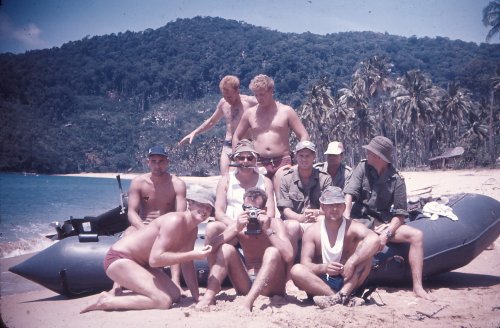
Back Row: Ginge Turton, Pincher Martin (Brum), Trevor Gibson
Middle Row: Dave Coote, Bungy Edwards (Boy Seaman on board HMS Repulse),
Ginge Bishard, Lt Cdr David Burstall (MCDOA member)
Front Row: Jock Allardyce, Stafford Cripps, Jesse James
Also see ‘The Far East Fleet Clearance Diving Team’ by Mike Gillam in the MCDOA website’s Dit Box.
From MCDOA member David Burstall:
"Hello Rob,
What a wonderful set of memorabilia. I regret I can't help much.
Re the FEFCDT - We visited Pulao Tioman for a beach clearance exercise with the Fleet when the photograph was taken with Jock Allardyce & Co in it. He did not dive on the SS YUNG HAO in my time. I note from his dates that he was with the Team from '61 to '63. I was there from '62 to '64, so the dive must have been in Mike Gillam's time. I took over from him in December '62.
There was an incident I had with Jock Allardyce (dates I can't remember), when he was on the bottom on the end of his life line, when suddenly the attendant yelled out: "Diver not answering! I've lost the diver!" and he pulled up an empty life line. There was a strong tide running, so the whole team looked all round to see if he had bobbed up to the surface. We spotted him about 50 yards away floating on the surface. The gemini was sent off pdq.
Jock was hauled in and brought back to the MFV. He had had to cut himself loose on the bottom as his life line had got tangled in the wreck. He was given a bollocking for frightening the living daylights out of us, followed by a tot. I can't remember what we were diving on at the time, but it was not the YUNG HAO.
Regards,
David"
From MCDOA member Mike Gillam:
"Very many thanks, Rob, although the team photo was taken shortly after my time (we left in December 1962).
On the beach at Pulao Tioman brings back many happy memories of warm sea, giant clams and coconuts. D. Allardyce CD, FECDT 1961-63, as shown on the plaque, has to have been one of my lads but I cannot now recall much about him – the perils of age!
I have no recollection of the SS Yung Hao or its bell. It must have been after my time. David Burstall should know more.
Yours,
Mike"
11 Mar 19 - PCDT Members in 1982
My old LMCDO '76 course mate Bernie Bruen MBE DSC, who superseded me as Boss 2 on the Plymouth Clearance Diving Team (PCDT) in early 1982, has passed me these photos of team members during his tenure: Boss 1 was MCDOA member John Wiseman.
10 Mar 19 - SDU2 deals with unexploded shell at Portslade
The Brighton Argus website contains this article reporting a call-out on Wednesday, presumably for members of Portsmouth-based Southern Diving Unit 2 (SDU2), to dispose of a dredged-up unexploded shell at Portslade in East Sussex.
9 Mar 19 - RN Diving Heritage: Plymouth Clearance Diving Team premises and FDT Datchet
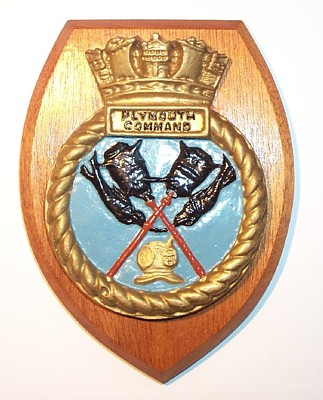
I am grateful to my old LMCDO '76 course mate Bernie Bruen MBE DSC, who superseded me on the Plymouth Clearance Diving Team (PCDT) in early 1982, for these black and white images. They show PCDT's old premises, including the waterfront, in the corner of HMS Drake in January 1973.
From my album: PCDT Redwingers in 1980
The original RN Diving School at Devonport was accommodated on board the hulks of the floating training establishment HMS Defiance. These photos are from the collection of the late RN diver Ernie Croft and were supplied by fellow Historical Diving Society (HDS) member Phil Thurtle (see entry for 20 Jun 09 in News Archive 26):
Left: The vessels making up HMS Defiance in the Tamar until the mid-1950s comprising front left
HMS Vulcan (originally a small torpedo boat carrier) with the old screw frigate HMS Inconstant
alongside her. Bringing up the rear is the old 1st class protected cruiser HMS Andromeda. Just
visible behind them is the battleship HMS Howe with an RFA in the distance. The minelayer
HMS Ariadne is on the distant trot.
Right: Ernie Croft with George Wookey and team at Devonport Navy Days in 1953
A few key dates to the best of my knowledge:
Jul 1969: Post of CinC Plymouth replaced by Flag Officer Plymouth. CinC Plymouth's Clearance Diving Team became FO Plymouth's Clearance Diving Team (PCDT).
Nov 1986: PCDT renamed Plymouth Clearance Diving Unit (PCDU), still under the Command of FO Plymouth.
Sep 1995: PCDU renamed Southern Diving Unit 1 (SDU1) and joined SDU2 (ex-FO Portsmouth & Medway Bomb & Mine Disposal Team, ex-Portsmouth & Medway CD Team, ex-Portsmouth CD Team, ex-Portsmouth Area Clearance Diving Unit (PACDU) to form the Southern Diving Group (SDG) under the Command of the Deputy Superintendent of Diving (DSofD) as a newly badged CINCFLEET officer.
Feb 1996: Post of Flag Officer Plymouth abolished.
Mar 1998: Southern Diving Group and Northern Diving Group joined with the Fleet Diving Group (FDG) to form the Fleet Diving Squadron (FDS) commanded by CO FDS directly under CINCFLEET (Navy Command's Fleet Commander since April 2012).
PCDT conducted Ships' Diver aptitude tests into the late 1980s. It moved into its new premises in 1987.
PCDT's fleet diving tender circa 1980 was FDT Datchet which came from HMS Vernon in exchange for FDT Ixworth.
From my album: PCDT Datcheteers in 1980
FDT Datchet was built by Vospers (Singapore) in 1968 and brought to the UK when Sembawang Naval Base closed in 1971 after serving with the Far East Fleet Clearance Diving Team (See 'The Far East Clearance Diving Team' by Brian Braidwood in the website's Dit Box). After working with HMS Vernon and then PCDT from 1979 as the only RN-manned vessel wearing a blue ensign, she was sold to Severn Seas Shipping Ltd of Appledore/Bideford, Devon in 1994 and is pictured as MV Datchet in several of the website's News Archives. On 4 April 2008, she was involved in a collision with the motor yacht Lady of Rudding while towing a barge off Tintagel in Cornwall. This is the official report on the Government website:
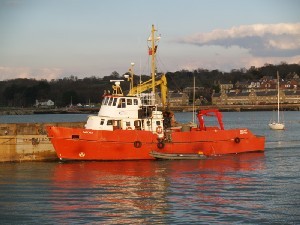
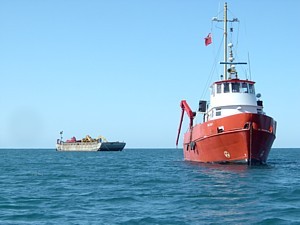
Early last month, former CPO(D) Cris Ballinger BEM sent me this photo he took while rowing on the Penryn River in Cornwall. It shows Bideford-registered MV Datchet in a decrepit state.
More photos and information, not all of it accurate, can be seen on this page of the Captain's Voyage Forum:
From MCDOA member Jon Chapple in Canada:
"Hello Rob,
Greetings from the west coast (left coast, best coast, etc.) of Canada!
Wonderful to see the old photos of PCDT/PCDU/SDU1 (aka “The Guzz Team”).
Just to contribute to part of “A few key dates to the best of my knowledge”.
01 Sep 1995: PCDU renamed Southern Diving Unit 1 (SDU1) and joined SDU2 (ex-FO Portsmouth & Medway Bomb & Mine Disposal Team, ex-Portsmouth & Medway CD Team, ex-Portsmouth CD Team, ex-Portsmouth Area Clearance Diving Unit (PACDU) to form the Southern Diving Group (SDG) under the Command of the Deputy Superintendent of Diving (DSofD) as a newly badged CINCFLEET officer.
In fact the then-incumbent of the post of SMCDO to FO Plymouth, dual-hatted as OIC PCDU, took command of the newly formed SDG. I know this as it was me!
On forming, the SDG was brought under the Superintendent of Diving and thence CINCFLEET. I have attached a photo of the CO SDG Board from SDG headquarters in Plymouth.
Board showing COs of Southern Diving Group
(Enanced to make names more legible)
The reorganisation of the diving branch that led to the creation of SDG and NDG was spearheaded by Charlie Wilson OBE (SMCDO, CINCFLEET Northwood), ably supported by Chris Davies (FOSNI SMCDO / OIC SNICDU) and myself (FO PLYMOUTH SMCDO / OIC PCDU). I recall that this task was dropped on us by Fleet with very little notice as apparently nobody had considered what would happen to the area clearance diving units when the posts of FO Plymouth and FO Portsmouth were abolished.
I am still with the Aqua Lung group, presently the Vice-President of Aqua Lung Canada, Victoria, British Columbia. Although many miles and 8 time zones from the UK, I am an avid reader of the 'Latest News' on the MCDOA website. Keep up the great work!
Yours aye,
Jonathan (Jon) Chapple
Lt Cdr RN (Ret’d)
Last Officer-In-Charge, PCDU
First Commanding Officer, SDG"
By Webmaster: Very happy to set the record straight, Jon. It was the Fleet Clearance Diving Team (FCDT), later the Fleet Clearance Diving Group (FDG), that was originally headed by DSofD when the area CD Teams were administered by SofD. Area CD teams even had to send him their monthly ROPs (Reports of Proceedings).
Back in the day it was all very convoluted if highly centralised. Although the area CD teams operated under their respective Flag Officers (often under the auspices of CINCNAVHOME (CinC Naval Home Command), SofD at HMS Vernon was responsible to CINCNAVHOME and CINCFLEET (via FMCDO - the Fleet MCD Officer)) for all RN diving issues including domestic and global operations, diving safety standards, experimental and deep diving trials, training standards, diving & EOD systems & equipment development & procurement (via MOD DOR(Sea)), equipment allocation (by no means consistent across the teams) as well as inspections of diving units (CD and Ships' Diving Teams) and their equipment, often hand in glove with CWTA (Captain Weapons Trials Assessment).
8 Mar 19 - First Issue of 'The Squashed Beetle'
I am grateful to Lt Ewan Blackburn RN for this email:
"Sirs, Ma’ams, Ladies and Gentlemen,
Let me introduce myself.
I am Lt Ewan Blackburn, the Staff engineer officer and Media officer for the Mine Warfare Battle Staff currently on generation prior to our deployment later in the year. As such I will be leading on all media releases and products for the staff.
Please find attached to this email, the first of our quarterly newsletter “The Squashed Beatle”. This will follow our generation from formation, generation and through our deployment.
If anyone would like to reach out to the staff regarding media, I am always available on this email and will endeavour to answer your questions as soon as possible
Hopefully this will be of interest for you and I look forward to hearing from you in the near future.
Kind regards,
Ewan Blackburn
Lieutenant Royal Navy
Mine Warfare Battle Staff White"
Postscript to a fairytale ending
In April 2016, a request was received by former WO(MW) Dixie Dean MBE, Chairman of the Minewarfare Association (MWA), from a lady called Gill Shaddick in Australia. She wanted to know the identity of the CO ("the most awesome guy") of the Ton class minehunter HMS Hubberston in December 1969 when her British family's yacht was seized by Communist Chinese forces and then released into Hubberston's care (see entry for 25 Apr 16 in News Archive 54).
With the help of Mike Coombes, custodian of the Association of RN Officers (ARNO) Navy List database, I was able to identify the CO as Lt Cdr (later Rear Admiral) Christopher 'Kit' Hope LAYMAN CB DSO LVO, a former Gentleman Usher of the Green Rod. Our information enabled Gill to track down Kit Layman via St James's Palace and thank him personally when she visited the UK last October.
Gill Shaddick and Kit Layman
Kit Layman joined the Royal Navy in 1956 and served for 35 years in many parts of the world. He commanded five ships of different sizes from HMS Hubberston based in Hong Kong to the aircraft carrier HMS Invincible. In 1982 he was commanding HMS Argonaut and the Seventh Frigate Squadron in the Falklands war when his ship suffered damage and casualties but came home safely. As a Rear Admiral he spent a happy time as Commander British Forces Falkland Islands. His last appointment was at NATO Headquarters for three interesting years during which time the Soviet Union and its empire collapsed. On retirement he worked for various companies and charities and his local Community Council, was appointed Gentleman Usher of the Green Rod (an Officer of the Order of the Thistle) and wrote two books.
Gill intended chronicling her Hong Kong experiences in a memoir and has now sent this email:
"Dear Dixie [Dean], Rob [Hoole] and Mike [Coombes],
As promised I am letting you know that my memoir, 'The Hong Kong Letters', has at last made its way to print. We are having a launch in Sydney at the end of the month, but it is already available on Amazon or through The Book Depository.
Thank you so much for all your help.
Gill Shaddick"
Here is the Amazon.co.uk listing for Gill's book:
The Hong Kong Letters: A Memoir by Gill Shaddick
7 Mar 19 - US Navy developments in Expeditionary MCM
The USNI website contains this article, including a video, describing recent US Navy developments in expeditionary mine countermeasures. It focuses on unmanned systems like those being investigated by the RN's MASTT (Maritime Autonomous System Trials Team commanded by MCDOA member Dave Stanbury). Such systems keep the man out of the minefield while speeding up the MCM operation and offer clandestine solutions to exploratory and possibly clearance operations. The article also contains some interesting facts about the manning of the units.
SAN DIEGO, Calif. – The Navy is investing in its explosive ordnance disposal (EOD) force, doubling the number of unmanned systems platoons in the community in the next couple years and improving the technology on their unmanned underwater vehicles.
The increase will add about 100 personnel to man the new platoons and the EOD Mobile Units they report to. The investment in these unmanned systems platoons – along with the expeditionary mine countermeasures (ExMCM) companies that command and control them – is helping the Navy’s EOD community have a greater presence around the globe.
ExMCM companies include unmanned systems platoons that use the Mk 18 Mod 1 Swordfish and the Mk 18 Mod 2 Kingfish to search bodies of water for potential dangers; an EOD mine countermeasures platoon with highly trained EOD techs that can reacquire a threat and either neutralize it underwater or safely bring it out of the water for study; and a five-person post-mission analysis cell that analyzes sonar and video data and makes recommendations on how to proceed to the ExMCM company and the higher headquarters at the EOD Mobile Unit.
ARABIAN GULF (Aug. 2, 2016) From left to right, Machinist Mate 1st Class Micah Patterson,
Boatswains Mate 1st Class Stephen Wodraska, Engineman 2nd Class Richard Meyer,
Mineman 1st Class Coy Tully and Mineman 3rd Class Pete Calvert, assigned to
Commander, Task Group 56.1, launch a MK 18 MOD 2 unmanned underwater vehicle
from a rigid-hull inflatable boat during Squadex 2016.
(USN Combat Camera photo by Mass Communication Specialist 1st Class Blake Midnight/Released)
ExMCM companies have been particularly active recently, developing procedures to operate on and employ platoons from a variety of U.S. and international navy ships and aircraft. Along with the upcoming increase in the number of companies, they are making themselves more adaptable and capable of handling threats as they evolve.
EOD Mobile Unit 1 – based at Naval Base Point Loma in San Diego, and the only West Coast unit with ExMCM companies – invited USNI News to join a demonstration mission with an unmanned systems platoon to better understand the community and how it is growing.
EOD Mobile Unit 1 commanding officer Cmdr. Jeremy Wheat told USNI News that the ExMCM companies have been developing embarkation plans and tactics to deploy on the Littoral Combat Ship, cruisers and destroyers, amphibious and auxiliary ships and even partner-nation warships. A recent push has been developing tactics to take the unmanned systems platoons and their UUVs from a ship and employ them forward via helicopter instead of via the platoons’ 11-meter rigid-hull inflatable boats (RHIBs) to give them more range...
CHINHAE, Republic of Korea (Oct. 18, 2016) Lt. j.g. Jonathon Ferris, assigned to Explosive
Ordnance Disposal Mobile Unit (EODMU) 1, reviews the mission data from a MK 18 MOD 1
Underwater Unmanned Vehicle (UUV) with participants in Clear Horizon (CH16)
in Chinhae, Korea. CH16 is a live-action exercise which enhances cooperation
and improves capabilities in mine countermeasures operations, with participating
nations including Republic of Korea Navy, United States, Australia, Canada,
New Zealand, Philippines, Thailand, and the United Kingdom.
(USN Combat Camera Photo by Petty Officer 2nd Class Daniel Rolston/Released)
The Navy has eight unmanned systems platoons now and will grow to 16 in the next three years. Each platoon has six smaller Swordfish and six larger Kingfish UUVs, as well as RHIBs and auxiliary equipment to operate the UUVs. Unlike other parts of the EOD community, the men and women in the unmanned systems platoons are not EOD techs but rather pull from a range of fleet ratings... [see the linked article for more]
These photos were also taken during recent CLEAR HORIZON MCM exercises off South Korea. It would appear that such exercises with the Republic of Korea have now been curtailed by US Presidential edict.
CHINHAE, South Korea (Nov. 21, 2009) Mine counter-measures ships USS Guardian (MCM 5)
and USS Patriot (MCM 7) are moored in the port of Chinhae for Exercise Clear Horizon.
Clear Horizon, an annual exercise conducted with the Republic of Korea Navy,
is one of the largest, international, mine counter-measures exercises in the world.
(USN photo by Mass Communication Specialist 1st Class Richard Doolin/Released)
WATERS SOUTH OF THE KOREAN PENINSULA (Oct. 23, 2014) The Avenger-class mine
countermeasure ship USS Warrior (MCM 10) participates in Exercise Clear Horizon 2014
off the coast of the Korean peninsula. Clear Horizon is an annual bilateral exercise
between the U.S. and Republic of Korea navies designed to enhance cooperation
and improve capabilities in mine countermeasure operations.
(USN photo by Mass Communication Specialist 1st Class Frank L. Andrews/Released)
WATERS SOUTH OF THE KOREAN PENINSULA (Oct. 23, 2014) The Avenger-class mine
countermeasure ship USS Chief (MCM 14) participates in Exercise Clear Horizon 2014
off the coast of the Korean peninsula. Clear Horizon is an annual bilateral exercise
between the U.S. and Republic of Korea navies designed to enhance cooperation
and improve capabilities in mine countermeasure operations.
(USN photo by Mass Communication Specialist 1st Class Frank L. Andrews/Released)
CHINHAE, South Korea (Nov. 5, 2015) Explosive Ordnance Disposal (EOD) technician 2nd Class
Andrew Dixon, right, assigned to EOD Mobile Unit (EODMU) 1, demonstrates the functions
of the DNS-300 underwater sonar system to Republic of Korea Navy UDT/SEALs during
Clear Horizon 2015 on Commander Fleet Activities Chinhae. Exercise Clear Horizon
is an annual bilateral exercise between the U.S. and Republic of Korea navies that
focus on increasing capabilities and coordination between ships, and aircraft in
mine countermeasures in international waters surrounding the Korean peninsula.
(USN photo by Mass Communication Specialist 2nd Class Daniel Rolston/Released)
CHINHAE, Republic of Korea (Nov. 12, 2015) Explosive Ordnance Disposal Technician
3rd Class Corey Barker, right, and Explosive Ordnance Disposal Technician Seaman
John Dirks, both assigned to Explosive Ordnance Disposal Mobile Unit (EODMU) 5,
perform water entries during Exercise Clear Horizon on Commander Fleet Activities
Chinhae. Exercise Clear Horizon is an annual bilateral exercise between the U.S.
and Republic of Korea navies that focus on increasing capabilities and coordination
between ships, and aircraft in mine countermeasures in international waters surrounding
the Korean peninsula. EODMU5 is assigned to Commander, Task Force (CTF) 75,
the primary expeditionary task force responsible for the planning and execution
of coastal riverine operations, explosive ordnance disposal, diving engineering
and construction, and underwater construction in the U.S. 7th fleet area of responsibility.
(USN Photo by Mass Communication Specialist 2nd Class Daniel Rolston/Released)
CHINHAE, Republic of Korea (Oct. 19, 2016) Members participating in Clear Horizon (CH16)
conduct live demolition operations in the waters south of Korea. CH16 is a live-action exercise
which enhances cooperation and improves capabilities in mine countermeasures operations,
with participating nations including Republic of Korea Navy, United States, Australia, Canada,
New Zealand, Philippines, Thailand, and the United Kingdom.
(USN photo by Petty Officer 2nd Class Daniel Rolston/Released)
6 Mar 19 - Latest Awards of LS&GC and VRSM
Congratulations to WO1(MW) A M Coles and PO(D) T S H Lawrence on being gazetted for the award of the 2nd Clasp to the Naval Long Service & Good Conduct Medal and to PO(D) D McGrath RNR on being gazetted for the award of the 2nd Clasp to the Volunteer Reserves Service Medal.
5 Mar 19 - Recent tweets
Click on the linked dates to see all associated photos and videos.
Commander SNMCMG2
4 Mar 2019 - SNMCMG2 is now taking part in Exercise POSEIDON off Romania and we welcome ESPS TAJO to the Group.
3 Mar 2019 - We celebrate today Bulgarian National Day alongside Constanta.
HMS Brocklesby (MCM2 Crew 8)
26 Feb 2019 - It was a pleasure to welcome Rear Admiral Bath, Assistant Chief of Naval Staff to our mess to discuss future ops & feedback experiences in the Middle East. Congrats to LET(ME) Griffiths, McKnight and ET(ME) Gammon who were presented with Good Conduct Badges.
18 Feb 2019 - Busy and successful time conducting training and Maritime Security Operations suppporting CTF152.
17 Feb 2019 - Another busy and successful period conducting training and Maritime Security Operations working in company with HMS Shoreham in support of CTF152.
HMS Chiddingfold (MCM2 Crew 2)
26 Feb 2019 - SITREP: with a little over two weeks until our Ready for Sea Date Inspection, Crew 2 crack on with essential exercises. Much to achieve. team focus and resilience.
20 Feb 2019 - Nearly home...
HMS Exploit
20 Feb 2019 - Welcome back!
HMS Ledbury (MCM2 Crew 1)
28 Feb 2019 - Getting personal – Crew from the French Destroyer FS CASSARD embark in HMS Ledbury at sea for 48 hours to see how the ‘Small Ships’ do it during Ex KHUNJAR HADD 2019.
26 Feb 2019 - ‘The Fighting Aces’ at sea participating in Exercise KHUNJAR HADD 2019. Getting straight to the business of Mine Hunting operations, recovering a Seafox Mine Disposal System after investigating simulated underwater contact.
HMS Middleton (MCM2 Crew 4)
3 Mar 2019 - Fantastic - 3000 followers! Thank you for following us. We’ll try to keep you informed and entertained! Have a photo - one of our officers under training snapped this shot in between showers the other day.
1 Mar 2019 - Sea survival is one of the basic skills every professional mariner needs to be familiar with. But we’ll always come to the rescue of any shipmate who falls overboard! Well done on completing your first week Gould 35s!
1 Mar 2019 - Storybook Waves, run by the brilliant Aggie Westons charity, is a wonderful way to support parents and children when their sailor is deployed away from home.
27 Feb 2019 - Thanks to the Royal Navy Historical Branch we have confirmed HMS Middleton’s motto: Verite sans Peur - Truth Without Fear. We think it’s a good leadership perspective as well!
27 Feb 2019 - Like the Gould 35s, HMS Middleton is on a journey - ours ends with FOST Final Inspection in the same week that our newest sailors pass out into the Fleet. We’ll be wishing you well every step of the way!
22 Feb 2019 - Congratulations to LET(ME) Patterson, who has received his General Service Medal 08 (Gulf of Aden) - a well earned recognition of a busy deployment.
20 Feb 2019 - Welcome back to 2 Basin HMS Chiddingfold!
HMS Chiddingfold (MCM2 Crew 2)
20 Feb 2019 - Glad to be back!
19 Feb 2019 - Back onboard - hurrah!! Congratulations Crew 2 and BAES Maritime, good luck for harbour trials and looking forward to seeing you back in 2 Basin.
19 Feb 2019 - The enterprise between BAe and the Royal Navy is bringing HMS Chiddingfold out of her refit. The Ship’s Staff are moving back on board and bringing her home to 2 Basin. A busy year ahead. We’ll keep you posted.
HMS Ramsey (MCM1 Crew 2)
27 Feb 2019 - Red sky at night, sailor’s delight. Beautiful evening in Scotland. The day may be over however operations continue on board HMS Ramsey.
27 Feb 2019 - What a beautiful morning in Scotland with perfect sailing conditions. Great to see HMS Cattistock from MCM2 during the pilotage. Safe watch all and all the best from HMS Ramsey with your future tasking.
25 Feb 2019 - Great sunset over Arran tonight. If you look closely you will see RFA Tideforce conducting her sea trials in the Scottish Exercise Areas. From HMS Ramsey all the best and have a safe watch.
HMS Shoreham (MCM1 Crew 7)
25 Feb 2019 - HMS Shoreham accompanied by HMS Ledbury with vessels from Oman, USA and France have taken part in Exercise KHUNJAR HADD’s 2019 MCM Protection Phase.
MASTT (Maritime Autonomous System Trials Team commanded by MCDOA member Dave Stanbury)
4 Mar 2019 - In early 2020, MASTT will commence training and trialling the MMCM UK/FR Project’s Systems. Here you can see the L3ASV Maritime Mine Countermeasures Unmanned Surface Vehicle (Apollo) on trials, off Plymouth, Devon.
27 Feb 2019 - Future of the Royal Navy, AUV, T45 and QE, basking in the record breaking February 2019 temperatures.
21 Feb 2019 - Dial 1 for REMUS..... Lack of GPS fix was a brief issue for MASTT’s COXN, as he tried to send the Mission Start Command to a reluctant REMUS 100, during the SeeTrack Training Course.
21 Feb 2019 - The team from MASTT brought some welcome sunshine back with them from San Diego, while testing Comms with their IVER3 during the SeeTrack Traing Course.
21 Feb 2019 - Cox’n at the Helm. SeeTrack Training Week, with SeeByte, in Portsmouth Hbr.
Navy Lookout
4 Mar 2019 - HMS Grimsby on the Clyde this morning.
4 Mar 19 - Another satisfied customer in Australia
Mick Parker is an MWO in the Royal Australian Navy. A few weeks ago he ordered copies of Home Waters: RN, RCN and USN Mine Forces Battling U-Boats in World War I and Night Raiders: USN, RN, RAN and RNLN Mine Forces Battling the Japanese in the Pacific in World War II, both co-authored by your humble Webmaster, to present to a fellow MWO on his retirement from the RAN.
I was gratified to receive this email from Mick on Saturday:
"Hi Rob,
Just an update on the two books I ordered and presented to David 'Lefty' Wright after 35 years of service.
All his fellow minewarfare officers in the office signed the books and we presented them to him last week. He was very impressed and really loved them. He especially appreciated that you had signed both books.
The timing of the presentation was perfect and he admitted that he was going to order the books the next day.
Thanks again for your help with this order. Would you be willing to let me know when your third book is published?
Kind regards,
Mick Parker"


Enemy Waters, the third volume of the trilogy, will cover the minewarfare battle against Germany and Italy during the Second World War including naval bomb & mine disposal at sea and on land. It is due to be published in a couple of months. I am donating the £10 profit from the sale of each signed copy to Project Vernon, the campaign to erect a monument in Gunwharf Quays to celebrate the minewarfare & diving heritage of HMS Vernon, which previously occupied the site, and those involved in minewarfare & diving - past, present and future. £1,500 has been added to date with more expected.
On a related note, I have recently had cause to correspond with MCDOA Honorary Member Vice Admiral Russ Crane RAN, former Chief of the Royal Australian Navy, regarding a forthcoming book by my sometime co-author Cdr David Bruhn USN. 'On The Gunline' will be devoted to the 270 USN and 4 RAN ships that served on the gunline in Vietnam.
Vice Admiral Russ Crane AO CSM RAN
I received this reply from Russ today:
"Rob,
Wonderful to hear from you...
The Australian commitment to Vietnam beyond the CDs and Helicopter Flight is not well known in Australia. Vietnam is seen largely as being very Army or should I say land-centric. Our three DDGs and Vendetta did a great job on the Gunline and mirrored the commitment and professionalism of other Australian forces in the same conflict. It’s a story that needs greater attention here in Australia.
Lots happening in the MCM and CD space as well over here at the moment. Besides a number of book releases in which Jake [Linton], Hec [Donohue] and Mike Turner feature prominently, there is a developing appetite in the historical podcast environment for the Navy MCM and CD story to be told. Jake, Hec and I, plus a few others, will be working with one podcast to tell some of the story early next month. Also I am facilitating a small fundraiser for the Navy Clearance Divers' Trust (of which I am a Trustee) here in Aus where we’ll be talking with one of our CPO(CD)s who was heavily involved in the Thai Cave rescue [see entry for 24 Jul 18 in News Archive 63]. Basically a chat about his life as a CD culminating with the Thai Cave job. Looking to educate Corporate Australia and hopefully get them to part with some of their hard earned cash in support of the CD Community through the Trust. So a bit going on. Clearly you are keeping very busy as well.
Please remember me to the guys in UK. I often reflect very fondly on my time in the RN both when under training and during my exchange time. Good times and lots of great memories.
Russ"
3 Mar 19 - Celebrating friendship with former CPO(D) Clive 'Taff' Thomas
I called in on Taff Thomas today and can report that he is hale and hearty.
Taff Thomas and Yours Truly (Rob Hoole)
More than forty years ago, Taff was one of a succession of coxswains we had from the ERP (Emergency Relief Pool) during a dire shortage of PO(D)s while I was XO of HMS WILTON. Our other coxswains included MCDOA member Jon Cox, Trev Kirton, Michael 'Harry' Harrison QGM and the late lamented Dougie 'Basher' Briggs and Bill McGovern. This was in the days when only Ldg Divers and above were allowed to dive deeper than 42 metres so I spent much of my time underwater or as standby diver, with Taff as supervisor, whether or not I was on watch as MHCO (Minehunting Control Officer).
From former CPO(D) Cris Ballinger BEM:
"Hi Rob,
Saw your photo of Clive and yourself. Here's one when he had hair.
Where did the years go?
Cris"
By Webmaster: Where indeed, Cris. Where indeed.
2 Mar 19 - RN Minewarfare Heritage: Memories of Lt Cdr Mike Gillam RN
I have just received this email from MCDOA member Mike Gillam and thought its contents should be shared:
“Many thanks, Rob, for reminding me of Brian Braidwood’s long and interesting account of his time as FCDO of the Far East Fleet CD Team. I re-read my copy and it brought back many memories.
I feel fortunate to still be soldiering on towards my ninetieth (another couple of years to go) and am still asked to spin a few ‘salty yarns’ and tell how it used to be. However, I have finally removed myself from the local circuit telling the story of my great uncle who opened up the Upper Yangtze Gorges to steam navigation having now been video-recorded for posterity.
I was so interested in reading ‘Home Waters’ that I jotted down a few thoughts, but I never got around to sending them to you. On receiving my copy, I looked forward to dipping into it as I invariably do with books of reference. However, I found myself so interested that I have been reading it in full, right from the start including the three forewords.
So, I started to ask myself the question why. Why I am reading ‘Home Waters’ like a novel? Then I thought back and remembered the extent of my experience of Minewarfare.
I was made aware of the damage a mine can cause early on in my career when, as an acting Sub Lt, I spent a few months in HMNZS ROTOITI off the west coast of Korea. Having ventured behind the lines up the Han River to drop a few 4” shells at 10 to 10 each morning just outside the demilitarized zone to concentrate their minds on making peace, we returned to Kure, Japan for some routine maintenance where we secured along one side of a large pontoon with a destroyer, the USS ERNEST G SMALL on the other side. She had lost her entire bow having struck a mine off the East Coast, said to have been one of those left over from the Russo/Japanese war of 1904. We both remained alongside with some difficulty when the eye of a particularly bad typhoon passed over us, losing the brow and parting many wires. Being that close to a ship with no front end certainly concentrated our minds but the ship’s company still referred to her as the ERNEST G SMALLER!
Gearing class destroyer USS Ernest G Small on 17 November 1950
(US Navy photo)
USS Ernest G Small steaming astern while on passage to Kure, Japan after losing
her bow to a mine off the east coast of Korea on 7 October 1951
(US Navy photo)
I gained my watch-keeping ticket as a confirmed Sub Lieutenant while serving in the Algerine class MSO HMS FIERCE, leader of the 2nd Minesweeping Squadron, the last such squadron in the Mediterranean Fleet, where I served as ‘office boy’ to Captain MS2 and deputy sweep deck officer to the First Lieutenant. The squadron also included HM Ships PLUCKY, CHAMELEON and RIFLEMAN. Thus, I experienced deploying single and double Oropesa sweeps; ’A’ sweeps with two, three or four ships in tandem; the complicated loop sweep that superseded the ‘L’ and ‘LL’ sweeps; and the Acoustic Hammer and Displacer acoustic sweeps.
On one major minesweeping exercise we carried the Med FCDT with FCDO Pip Piper and CD1 Sam Stanley, my first acquaintance with Clearance Diving. This led directly to my application for the CD Officers course. This was supported by both Pip Piper and Morty Drummond who was Squadron MCM Officer to the other MSO squadron that just happened to be in Malta passing through on its way home from the Far East.
Later on, I relieved the Staff TASO in MANXMAN as SOO/SMCDO to the Inshore Flotilla FES conducting joint MCM exercises with the US, Malaysia, Thai, Japanese and Philippine navies where we were having to devise the tactical use of a mixed force of MS and MH vessels in a variety of scenarios. On one occasion I spent ten days in a USN ship helping to run the exercise for the US Commodore i/c as his staff officer was not sufficiently senior or experienced.
In my First Lieutenant’s time in the Dartmouth Training Squadron we acted as guard ship to the RNR Coastal Minesweepers on Exercise ROCKHAUL, their annual jolly to Gibraltar, and my final appointment in the service was back at HMS VERNON as IMW responsible for all MCM training.
Thus, having spent most of my naval career associated with Minewarfare in one respect or another, it is no wonder that I have been fascinated by your account of the early days and the involvement of the USN of which I was unaware. I look forward to reading the next two books.
My apologies for cluttering up your in-box with my reminiscences but I thought you might be interested.
Just one addition; my term-mate and same house at the RN College, JMN (John) Walton who I still meet at our annual term lunch (there are only about a dozen of us left) was the first, I believe, First Lieutenant of the first ‘Ton’, HMS CONISTON. We will chat about your books when we next meet.
Yours,
Mike”
1 Mar 19 - MWA Southern Area 'Dit Session'
Last night's highly enjoyable Minewarfare Association (MWA) monthly 'Dit Session' took place in The Crown in Fareham. Attendees included Dixie Dean, John Gunter, Peter Hitchcock, Peter 'Taff' Reader and Peter Whitehead plus joint-MCDOA/MWA members Bill Kerr, George Turnbull and 'Yours Truly (Rob Hoole).
George Turnbull claimed it was the first time Peter Hitchcock had bought him a pint in over 40 years.
28 Feb 19 - Update from MASTT (Part II)
I am again grateful to MCDOA member Dave Stanbury, OIC of the Maritime Autonomous System Trials Team (MASTT), for the second part of his contribution (see entry for 24 Feb 19):
MASTT Continue Training with SeeByte for AUV Trials
The threat of mine warfare is now more prominent than ever and, with 95% of the world’s commerce moving by sea, the security of our waters, coastlines and populations remains a key issue for maritime nations.
There has been a shift in recent times towards using unmanned assets such as AUVs and ROVs thus removing the man from the threat. The RN is beginning to invest in unmanned underwater vehicles (UUVs) to conduct Mine Countermeasure (MCM) missions in support of their EOD teams in challenging conditions. These vehicles have been primarily used to detect, classify, identify and localise mines.
MASTT personnel have recently completed training IVER3 at Ocean Server which has tied in nicely with SeeTrack software training with SeeByte, who offer a range of software solutions to maximise the capabilities of UUVs for MCM missions.
SeeByte have offices in Edinburgh, Southampton, UK and San Diego, USA. However, their Training Team arranged the MASTT SeeTrack V4 Training Course to be conducted locally, in Portsmouth and out on the water in Portsmouth Harbour. They offer a wide range of training and support options, ranging from help with installation and on-site implementation, to training, maintenance and post-installation support.
SeeByte’s smart software provides MASTT with the capability to rapidly plan a mission, gather data and integrate it into one layered image of the underwater space in a significantly reduced time. Equipment independent, the SeeTrack software is compatible with leading brands of UUVs and Off-board Assets. The training at both Ocean Server and SeeByte was vital for the Operators at MASTT to conduct successful Stability Trials of the IVER3 and REMUS100 vehicles over a week of various contact re-acquire missions against varying Tidal Streams, in the South Coast Training area X5050.
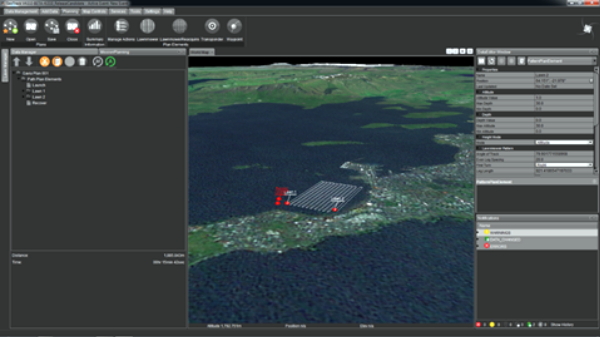
This also affords mosaicing of SONAR for measuring coverage in near-real time.
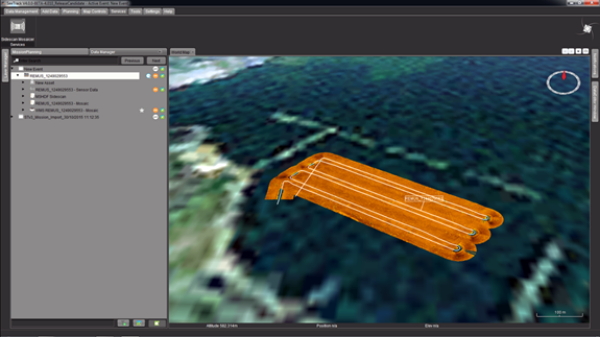
Geo-reference video enables fast access to video and localisation of contacts.
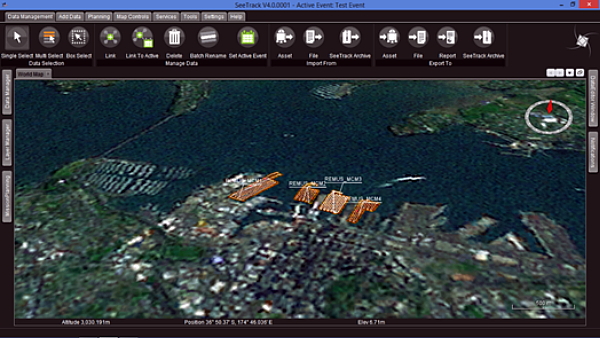
Contact management tools enabling effective management of hundreds of contact.
.jpg)
.jpg)
27 Feb 19 - Standing NATO Mine Countermeasures Groups
SNMCMG1
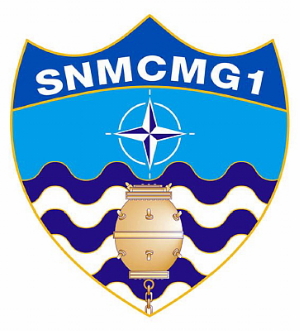
Standing NATO Mine Countermeasures Group 1 (SNMCMG1) was originally formed in Ostend on 11 May 1973 as Standing Naval Force Channel (STANAVFORCHAN aka 'Stan's Navy'). It operated under the control of the then Commander-in-Chief Channel at Northwood (CINCHAN, i.e. CINCFLEET - now the Fleet Commander - wearing a different hat) and its primary purpose was to ensure the safety of navigation and the approaches to reinforcement ports in the English Channel and North-West Europe. The force also succeeded admirably as a demonstration of NATO unity and commitment. See 'Stan's Navy - A Tale of STANAVFORCHAN' in the website's Dit Box.
STANAVFORCHAN initially comprised MCMVs from Britain, Germany, Belgium and the Netherlands with the temporary attachment of ships from the USA and Denmark. When Norway and Denmark joined the force in 2000, its operating area was significantly expanded and it was renamed Mine Countermeasures Force Northern Europe (MCMFORNORTH). The assessment of new threats led the team to becoming a global-scale group. In 2002, the force was renamed NATO Response Force MCM Force Northern Europe. In the same year the group was joined by ships from NATO new members Poland, Lithuania, Latvia and Estonia. The force has since changed its name to Standing NRF Mine Countermeasures Group One in January 2005 and to Standing NATO Mine Countermeasures Group One (SNMCMG1), its current title, in 2006. Command is rotated annually and its Commander is supported by an international maritime battle staff. MCMVs normally rotate every 6 or 12 months.
Past Commanders of the force have included:
May 1984 - May 1985: MCDOA past-President Richard Moore
May 1988 - May 1989: MCDOA member Pat Gale
May 1992 - Jun 1993: The late MCDOA member Tim Hildesley OBE
May 1996 - May 1997: MCDOA past-President Colin Welborn
May 2002 - May 2003: MCDOA member Adrian Cassar
Jan 2008 - Jan 2009: MCDOA member Chris Davies
Chris Davies, my 1st Lt in HMS Berkeley in 1989, was the last RN officer to command the group.
Chris Davies (centre)
SNMCMG1 is currently commanded by a Danish officer embarked in HDMS Thetis with FGS Dillingen, FGS Homburg and BNS Bellis. Most recently, it has been operating off the French Atlantic coast, after a visit to Cherbourg, where it has disposed of a several items of historical ordnance. More news and images can be found on its Facebook page:
SNMCMG2

Standing NATO Mine Countermeasures Group 2 (SNMCMG2) was originally formed on 27 May 1999 as Standing Mine Countermeasures Force Mediterranean (MCMFORMED). It was renamed Mine Countermeasures Force South (MCMFORSOUTH) to balance MCMFORNORTH from 3 September 2001 to 1 January 2005 when it was renamed SNMCMG2. It operates under Allied Maritime Command (MARCOM), one of the three component commands of Allied Command Operations. Like those of its northern neighbour, the group's ships rotate every 6 or 12 months and normally comprise MCMVs from NATO navies bordering the Mediterranean.
MCDOA member Dave Stanbury was SNMCMG2's Chief of Staff (SOO in old money) from Oct 2015 to Oct 2016.
Dave Stanbury (far left)
Past Commanders of the force have included:
Jul 2017 - Jul 2018: MCDOA member Justin Hains
Justin Hains (right)
SNMCMG2 is currently commanded by a German officer embarked in FGS Werra with the Turkish TCG Akçakoca, the Romanian ROS Lt Lupu Dinescu and the Bulgarian BGS Tsibar. Most recently, it has been operating in the Black Sea and has just visited Varna in Bulgaria. More news and images can be found on its Facebook page:
26 Feb 19 - Salvage of HNoMS Helge Ingstad
Watch a live video stream of the salvage of the Norwegian frigate (see entry for 8 Feb 19). Refresh as necessary.
PM 26 Feb 2019
AM 27 Feb 2019
PM 28 Feb 2019
PM 3 Mar 2019
25 Feb 19 - Recent RN EOD incidents
The following articles describe recent EOD incidents involving Royal Navy diving units:
Spirit FM 26 Feb 2019: Wartime bomb explosion felt for miles
Southern Daily Echo 22 Feb 2019: Bomb squad called to Southampton University's Highfield Campus
Chichester Observer 20 Feb 2019: Watch controlled explosion on Medmerry Beach — fifth of its kind in less than five weeks
Somerset Live 18 Feb 2019: Watch the moment Second World War bomb is detonated on a Somerset beach
Cornwall Live 12 Feb 2019: Royal Navy bomb squad called to Cornish village
The Courier 5 Feb 2019: Warning and exclusion zone put in place after ‘explosive’ found by Fife trawler
ITV News 5 Feb 2019: Bomb squad detonates World War Two shell taken into north Devon school for show-and-tell
We Are South Devon 28 Jan 2019: Royal Navy Bomb Disposal called to Brixham
24 Feb 19 - Update from MASTT (Part I)
I am grateful to MCDOA member Dave Stanbury, OIC of the Maritime Autonomous System Trials Team (MASTT), for this contribution:
Training continues for RN MASTT
IVER3 Training Courses are an annual affair. The inaugural training course, taught by Ocean Server, commenced in Feb 2018 at MASTT in HMNB(P). Recently, Ocean Server (now named L3 Ocean Server) secured new premises in San Diego and were keen for a 5-man team from MASTT to be trained by the same team at their new location.
Training for MASTT was staged over a week long period of classroom planning and post-mission analysis using the updated software package which MASTT has just had installed on their new GETAC Laptops, along with Level 1 maintenance training. The week also included harbour surveys of wrecks, beach approaches (for amphibious operations) and open ocean missions.
The new premises and two seagoing vessels offered easy access to sheltered waterspace and reliable weather although the rain, at times, was torrential. Additionally the location is in very close proximity to their major End User/Customer (the US Navy).
The timing of the course was planned to take place just prior to the first set of IVER3 Stability Trials in 2019 which will take place in the South Coast MW Training area off Selsey. This trial will assess, for MHC and DSTL, the effects of tidal currents, below and above 1 knot, on lawnmower and re-acquire missions.
23 Feb 19 - Minesweeping during Operation IRONCLAD
I was recently passed this query via the Vernon Monument website:
"My grandfather (Sidney Smith) was on the minesweeper HMS Romney during Operation IRONCLAD (1942 Madagascar) and was subsequently awarded the DSC by the King. HMS Romney detonated two harbour mines during the morning of the landing on 5th May.
I was wondering if you have any more information on the action.
Appreciate any further information.
Steven Smith"
I was able to send this initial response:
"Hello Steve,
As you already know, Operation IRONCLAD was the Allied amphibious invasion of Diego Suarez in Madagascar in May 1942. It is described in various sources including this page in Wikipedia:
The following information is abridged from ‘Fleet Sweepers at War’ by Jack Williams:
In March 1942, the Bangor class minesweepers BOSTON, CROMARTY, CROMER, POOLE, ROMNEY, SEAHAM and WHITEHAVEN of the 14th Minesweeping Flotilla arrived in Gibraltar from the UK. BEAUMARIS remained behind owing to problems with her turbines and was subsequently transferred to another flotilla for duties in home waters. RYE also stayed in the UK undergoing a refit but it was intended that she would join the others later.
HMS Romney
(IWM photo)
Despite their primary role as minesweepers, these ships were intended to act as escorts and anti-submarine vessels in the Mediterranean to replace heavy losses in the Fleet. However, on arrival at Gibraltar, the flotilla then had to proceed the long way round to join the Mediterranean Fleet at Alexandria via Freetown and the Cape of Good Hope then through the Suez Canal.
After oiling at Durban, CROMARTY, CROMER, POOLE and ROMNEY were ordered to join the Eastern Fleet in the Indian Ocean, leaving BOSTON, SEAHAM and WHITEHAVEN to continue their passage through the Suez Canal and into the Mediterranean.
Having joined the Eastern Fleet, the four Bangors then joined up with the invasion fleet, which included the aircraft carriers ILLUSTRIOUS and INDOMITABLE, the battleship RAMILLES, the cruisers DEVONSHIRE and HERMIONE and numerous destroyers, bound for Madagascar and Operation IRONCLAD. The task of the sweepers was to sweep ahead of the assault force then clear an area to seaward of the landing beaches at Courier Bay, from where the troops would march to Diego Suarez. Thereafter, the sweepers were to carry out routine sweeping during the operation.
In the initial phase of the landings, which took place on 5 May 1942, a number of mines were cut. It all turned out to be a bit of a shambles, all of them losing minesweeping gear in the process.
By 19 May, their work at Madagascar was completed and the four Bangors of the 14th MSF, now on loan to the Eastern Fleet, sailed for Mombasa. They remained in the Indian Ocean for the next few months attached to the Kilindini Escort Force, engaged on escort duties to and from Aden. On 22 September, they left the Eastern Fleet and sailed for the Mediterranean via the Red Sea and the Suez Canal. They subsequently re-joined BOSTON, SEAHAM and WHITEHAVEN at Alexandria.
The award of your grandfather’s Distinguished Service Cross is gazetted here:
https://www.thegazette.co.uk/London/issue/35679/page/3716
It was awarded to Mr. Sidney Smith; Commissioned Engineer, Royal Navy (among several others) “For bravery and enterprise while serving in H.M. Ships, Transports and Royal Fleet Auxiliaries in the successful operations which led to the surrender of the important base of Diego Suarez”.
I regret I have no more detailed information about the action.
Best wishes,
Rob Hoole"
Steve subsequently sent this reply:
"Hello Rob,
I wish to thank you greatly for the research and I will place the write-up with the medal in a showcase for the family.
Sincerely yours,
Steve Smith"
I have since discovered that Operation IRONCLAD is chronicled in Naval Staff History: Second World War: Battle Summary No. 16 (Naval operations at the capture of Diego Suarez (Operation "Ironclad") May, 1942) and have enlisted the help of Naval Historical Branch in obtaining any available details about the minesweeping operations.
22 Feb 19 - Book List updated
The website's Book List has recently been updated. It contains details of publications of possible interest to members of the naval minewarfare & diving community.
Suggestions for additions should be sent to the Webmaster.
21 Feb 19 - Memories of Overseas Long MCD Officer courses
It is sometimes forgotten that Minewarfare & Clearance Diving officers of many foreign navies were trained at HMS Vernon. Nationalities included Agentinians, Australians, Bangladeshis, Canadians, Germans, Indians, Iranians, Malaysians, Netherlands, New Zealanders, Norwegians, Pakistanis, Portuguese, Singaporeans, South Africans and Sri Lankans. Where possible, I have included their names in the QDD, CDO, MCDO & MWO Course Nominal Lists 1944 to Feb 2015 in the Branch History section of the website but I have been unable to acquire comprehensive records or photographs.
I have tried to maintain contact with course members where possible and am most grateful to Capt Hartmut 'Fiete' Walz FGN for sending these photos of his own course (OLMCDO '72) plus OLMCDO '66 and OLMCDO '70:
OLMCDO '66
OLMCDO '66 - Course Officer: Lt Cdr Phil White RN (later Cdr Philip Balink-White MBE RN). Course Instructor: CPO(CD1) Pat Christmas. Students: Lt Woody Woodburne SAN, S/Lt Helge Ingetsin Oy RNoN, S/Lt Imtiaz PN, S/Lt (later Cdr s.g.) Rathore PN, S/Lt (later Cdr s.g.) Winfried Battke FGN and S/Lt (later Capt) Hartmut Spieker FGN.
OLMCDO '70 with two CD1 course members at Chattenden during DEODS module
OLMCDO '70 - Course Officer: Lt Mike Harwood RN (later Lt Cdr Mike Harwood MBE RN). Course Instructor: CPO(CD1) Michael 'Shiner' Brassington. Students: Lt (later Lt Cdr) Gerd Thoms FGN (had to abort due to a broken rib and try again in OLMCDO 1971), S/Lt (later Capt) Harald 'Harry' Freier FGN, Winston Wong Qum Quai (not quite sure) Singapore Navy and Balwant Singh Singapore Navy. There might have been some Iranian officers at the very beginning of the course but they abandoned it for various reasons.
OLMCDO '72
Front row: Lt Uwe Stein FGN, Lt Cdr Sverre Lund RNoN, Lt Ed Thompson RN,
Lt Henning Bess FGN, S/Lt Victor Prohl FGN
Back row: PO(CD1) Jim Quinn, S/Lt Hartmut 'Fiete' Walz FGN, CPO(CD1) Dave Lott
OLMCDO '72 - Course Officer: Lt Ed Thompson RN (later Lt Cdr Ed Thompson MBE RN). Course Instructors: CPO (later FCPO(CD1)) Dave 'Mona' Lott BEM and PO (later CPO(CD1)) Jim Quinn. Students: Lt (later Cdr s.g.) Uwe Stein FGN, Lt Cdr (later Cdr s.g.) Sverre Lund RNoN, Lt (later Rear Admiral Lower Half) Henning Bess FGN, S/Lt (later Cdr s.g.) Victor Prohl FGN and S/Lt (later Capt) Hartmut 'Fiete' Walz FGN.
I was privileged to be the Course Officer for OLMCDO '82 and am still in touch with the now Rear Admiral Bazlur 'Baz' Rahman of the Bangladesh Navy. The course instructor was CPO(D) Bob Oulds, superseded by CPO (later WO(D)) Ray Ramsay, and the second dickies were the late LS(D) (later Lt RN) Thomas 'Ned' Kelly and LS(D) Charlie Smithard. The students comprised 'Baz' plus S/Lt Mohd Kamal Bin Yunis RMN, S/Lt Wan Burhanuddin Bin Jusoh RMN and S/Lt Jamaladin Bin Mohd Saman RMN.
See entry for 27 Nov 16 in News Archive 56 which also contains a photo of the first International CDO Course in 1955.
20 Feb 19 - General developments in minewarfare
George W Pollitt is a minewarfare analyst. He is a 1963 graduate of the US Air Force Academy and received a Master of Engineering degree in aerospace engineering from the University of Florida in 1976. After leaving the Service, he worked as an engineer for the Naval Ship Engineering Centre where he was Technical Agent for two major mine countermeasures projects: the Mine Neutralisation System and the Shipborne Minehunting Sonar.
In 1975, he transferred to the Naval Coastal Systems Laboratory in Panama City, Florida, where he developed mine countermeasures tactical applications and worked on force-level analyses. In 1980 he joined the staff of Commander, Mine Warfare Command and worked variously as Mine Countermeasures Analyst, Advisor for Research and Analysis, Deputy Department Head for Operations, and Technical Director. He retired from the Mine Warfare Command in 1997 and joined the Johns Hopkins APL (Allied Physics Laboratory) as a member of the Senior Professional Staff in the Joint Mission Analysis Group. In 2000, he had this seminal paper published in Volume 21 No. 2 of the Johns Hopkins APL Technical Digest:
Mine Countermeasures Requirements To Support Future Operational Maneuver
George now maintains a database of fellow minewarfare professionals and emails regular bulletins drawing attention to items of possible interest. Most recently, these have included:
Navy to Commission Littoral Combat Ship Tulsa
Navy captain describes how surface attack drones will impact maritime warfare
Don’t Kill the Navy Mine Countermeasures Triad
Mine Countermeasures Mission Package Completes Integration Testing of Unmanned Vehicles
USS Wichita Commissions Saturday, Will Bring LCS MCM Capability to East Coast
Kraken Completes Sea Tests of KATFISH with Elbit Systems
WW II mine washes up at Cape Hatteras on NC’s Outer Banks. It’s a big one.
The Forgotten History; The Mining Campaigns of Vietnam 1967-1973.
Navy Thinking Beyond Littoral Combat Ship for Future Mine Warfare
Petty Officer 2nd Class John Christner assigned to Commander, Task Group 56.1 (CTG 56.1),
Explosive Ordnance Disposal Mobile Unit One, embarked aboard RFA Lyme Bay (L 3007),
examines an inert mine training shape on Oct. 15, 2016, during UK/US Mine Countermeasures
Exercise 2017 (UK/US MCM-Ex 17).
(US Navy photo)
Navy Developing Underwater Robotic Arm
Navy Crafting Master Plan for New Era of Mine Warfare
Let me know if you would like to be added to his address list.
19 Feb 19 - Latest VSO appointments
Congratulations to Jerry Kyd, principal guest at our last annual dinner (see entry for 24 Nov 18 in News Archive 64) on being promoted to Vice Admiral and Fleet Commander (new style CINCFLEET) as announced in this article on the Forces Network website.
Other changes include:
Vice Admiral Tony Radakin to become the First Sea Lord.
Vice Admiral Ben Key to become Chief of Joint Operations.
Rear Admiral Nicholas Hine to be promoted to Vice Admiral and Second Sea Lord.
Rear Admiral Keith Blount to be promoted to Vice Admiral and to be NATO's Commander Maritime Command.
Rear Admiral Christopher Gardener to be promoted to Vice Admiral and to be Chief of Materiel (Ships).
Rear Admiral Martin Connell to be the new head of the Fleet Air Arm.
Commodore Jim Higham to be promoted to Rear Admiral and to be Assistant Chief of Naval Staff (Ships) and Chief Naval Engineer Officer.
Commodore Andrew Burns to be promoted to Rear Admiral and to be Commander Maritime Forces.
Commodore Paul Marshall to take over the team overseeing the design and construction of the new Type 26 and 31 frigates, as well as replacement solid support ships for the Royal Fleet Auxiliary.
18 Feb 19 - Death of Lt Cdr Michael Marshall MBE RN
I am saddened to publish this announcement received today from MCDOA member Steve Marshall DSC:
"Hi Rob,
Hope you are well?
Some very sad news. My dad died suddenly last night. He was 86.
He had a mini-stroke last weekend and went into hospital where they found that he had an infection in his blood and heart but he was being treated for that and certainly did not appear to be in danger of dying. Then last night he had a massive heart attack and died quickly.
Many of our branch knew him well, as you know, for all the years he spent looking after the MCM squadrons at both HMS Vernon and then in the Dockyard. He always felt proud to being called an honorary member of our association so I thought you could put something on the web site so those that knew him will hear this news.
He served for 44 years in the RN and his name is up on the wall in HMS Excellent's wardroom as it was the home of the Ordnance Engineer Officers. He was there only a couple of months ago for their annual luncheon.
Yours Aye,
Steve"
I well remember Steve's dad Mike when he was supporting the HMS Vernon-based MCMVs while working in PCG (Portsmouth Craft Group). It seems like only yesterday that the pair of them were running marathons together. Mike also served in the LPD HMS Intrepid, the submarine depot ship HMS Forth and the guided missile destroyer HMS Devonshire among other ships. Despite being a WE officer, he was a keen supporter of the MCDOA and attended many of our functions, most recently our annual dinner in 2017.
Mike Marshall with his son Steve and grandsons David and James at the 2001 MCDOA Dinner
Mike Marshall (right with bugle) and his son Steve (left) at the 2015 MCDOA Dinner
I am sure all members of our community will join me in extending our heartfelt condolences to Steve and the rest of his family.
16 Feb 19 - Recent tweets
Click on the linked dates to see all associated photos and videos.
COMUKMCMFOR (Commander UK MCM Force (currently MCDOA member Steve White) in Bahrain for Operation KIPION)
19 Jan 2019 - COMUKMCMFOR & CO Cardigan Bay welcomed Capt Alfodary, Kuwait Coast Guard, Cdr CTF152, to RFA Cardigan Bay. They discussed opportunities to enhance Gulf Maritime Security & interoperability between the Minewarfare Battle Staff, RFA Cardigan Bay & CTF152.
13 Jan 2019 - Some of our sailors & personnel from RFA Cardigan Bay, UKMCC, UKNSF, HMS Blyth and HMS Brocklesby took part in the Bahrain Half Marathon. All ran really well in strong winds & cool temperatures. The RN & RFA went away with a few trophies too.
HMS Bangor (MCM1 Crew 8)
24 Jan 2019 - We’ve been up and around the Isle of Skye honing our minehunting skills at the British Underwater Technology and Evaluation Centre. We even had a moment to enjoy the view!
21 Jan 2019 - Congratulations to Andy Jones. Mine Warfare is an integral part of our national capability. “First In, Last Out, Leading the Way” .
Andy Jones
20 Jan 2019 - Feeling very privileged after taking command of the Royal Naval Reserve Minewarfare Branch with responsibility for a team of part time specialists with niche skill sets supporting the Royal Navy.
17 Jan 2019 - An early start for us today as we came to a buoy to check our compass. Enjoying a rare bit of Scottish sunshine too!
HMS Brocklesby (MCM2 Crew 8)
3 Feb 2019 - A busy week for MCM2 Crew 8 conducting gunnery training & rafting with RFA Cardigan Bay to sustain Maritime Security Operations with CMF Baharain. A visit from the Baltimore Ravens cheerleaders awaited us on return to our base port of Bahrain!
29 Jan 2019 - A brief pit stop in Abu Dhabi following a busy period at sea conducting Maritime Security Operations with CMF Bahrain.
25 Jan 2019 - MCM2 Crew 8 doing what we do best. At sea in the Gulf undertaking mine counter measures operations.
13 Jan 2019 - A great sporting weekend. The Brocklesby ‘Bees’ scored 6-3 against Bahrain RFC football team and two members of the Ship’s Company competed in the Bahrain Half Marathon.
10 Jan 2019 - A pleasure to welcome Jarred Christmas of The Hot Shots UK and the support team on board after a fantastic CSE Show.
HMS Ledbury (MCM2 Crew 1)
29 Jan 2019 - M30 leaving Mina Salman, Bahrain, to commence operations in the Gulf. Maintaining maritime security and Defending Britain's Intetests.
18 Jan 2019 - Baton passed. Lt Cdr Heward takes over HMS LEDBURY after a successful operational deployment in the Gulf under Lt Cdr Thompson’s Command.
10 Jan 2019 - Leading Diver Davies received the prestigious award of 'Sailor of the Deployment' from Commander UKMCC, Cdre Dainton. Top diver, Leading Hand of the Mess and Christmas planner.
HMS Middleton (MCM2 Crew 4)
15 Feb 2019 - Crew 4 have achieved a major milestone - just a month after taking over HMS Middleton, FOST have scrutinised us and confirmed we are Ready to Train. More hard work lies ahead to prepare for OST, but Crew 4 are on the curve!
7 Feb 2019 - Congratulations to LS(MW) and AB(MW) 18-03 course, who completed the sea phase of their mine warfare training with us today. See you in the Fleet!
7 Feb 19 - Another stormy morning in the Solent. Winds over 30kts so time for some internal damage control training!
4 Feb 2019 - A stormy day today, but HMS Middleton is at sea training the next generation of Able Seamen (Mine Warfare). Never miss an opportunity to exchange IDs by flashing Morse light with your fellow Hunts though!
1 Feb 2019 - Delighted to assist, we are all mariners together no matter who we are or what we do. Thanks to Solent CG and Bembridge RNLI for their professional control and coordination.
HMNB Portsmouth
1 Feb 2019 - On Wednesday night HMS Middleton investigated a possible distress flare sighting off the beach at Ventnor, supporting the Solent Coastguard and Bembridge RNLI. No vessels in distress were found but this is a great example of the RN supporting mariners in the local area.
31 Jan 2019 - Good evening Twitter, from a very snowy Portsmouth!
HMS Ramsey (MCM1 Crew 2)
15 Feb 19 - HMS Ramsey was joined this week at sea by reservists from HMS President RNR, HMS Wildfire and HMS King Alfred. It has been an absolute pleasure to have you all on board and we look forward to seeing you in the Fleet again soon!
14 Feb 2019 - HMS Ramsey conducting live gunnery firing at sea - putting the ‘war’ into ‘warship’.
13 Feb 2019 - A busy day on board. HMS Ramsey conducting MCM operations including a drill mine lay and recovery. We are also lucky to have been joined by 3 reservists who also got stuck in!
11 Feb 2019 - Today HMS Ramsey returned to sea for a trials and training period. MCM1 Crew 2 will be conducting a vigorous programme to ensure the Ship and Crew are ready for future operations. Standby for further updates!
6 Feb 2019 - HMS Ramsey. It is 67 years since the passing of His Majesty King George VI. Today we celebrate the Accession of Her Majesty the Queen, who we are proud to serve.
31 Jan 31 - Congratulations to LET(ME) Jarvie who was today presented with his General Service Medal with North Africa Clasp. LET(ME) Jarvie was serving in HMS YORK during the Libya conflict of 2011.
HMS Shoreham (MCM1 Crew 7)
27 Jan 2019 - In the coolness of last Friday evening HMS SHOREHAM was hosted by Bahrain RFC for a friendly match, the hosts beating the mine hunter 3-0. Thanks to Bahrain RFC for their hospitality on what was a great night!
16 Jan 2019 - After a busy time at sea maintaining maritime security, the Crew of HMS SHOREHAM enjoyed a few days alongside in the Qatari capital, Doha.
MASTT (Maritime Autonomous System Trials Team commanded by MCDOA member Dave Stanbury)
16 Feb 2019 - 5 MASTT Trainees were engaged in IVER3 AUV Training this week, with L3 Ocean Server, San Diego, CA.
12 Feb 2019 - Over (sic) Training Course continues in San Diego Bay.
12 Feb 2019 - Another week of training for a team of 5 from MASTT, at Ocean Server.
29 Jan 2019 - Never a grey day in MASTT! RNMB Hazard heads out to the Campbeltown ATP area on Survey Tasking before JW 1/19.
15 Jan 2019 - MASTT’s second period of internal training in 2019 continues, with R100 AUV and M500 ROV Training at Waterlip Quarry. The Quarry survey and use of ROV to identify objects will provide continuation and initial training for the Team.
13 Feb 19 - Restoration of original MW Branch badge
Courtesy of Dixie Dean MBE:
"The RNTM has been issued notifiying the Mine Warfare Fraternity of the re-introduction of the Mine Warfare Branch Badge. It will be available from Naval Stores from 28 Feb 2019.
BZ to all involved (Stirling, Bunny, Captain Readwin) in getting the badge re-introduced. Soooo much better than the Warfare Branch version."
Senior rates' versions of the outgoing and the newly restored original MW sub-branch badges
11 Feb 19 - Latest Awards of LS&GC
Congratulations to PO(MW) Simon Clarke, PO(MW) Iain Moore and LS(D) Craig McMillan on being gazetted for the award of the Naval Long Service & Good Conduct Medal.
8 Feb 19 - Detonation of torpedoes from HNoMS Helge Ingstad
These YouTube videos show the recovery and spectacular detonation of Sting Ray ASW torpedoes from the wrecked frigate HNoMS Helge Ingstad by clearance divers of the Royal Norwegian Navy (see entry for 16 Dec 18 in News Archive 64)
7 Feb 19 - HMS Ledbury hones her skills
The Royal Navy website contains this article reporting that HMS Ledbury (MCM2 Crew 1) has been testing her guns and mine disposal equipment during training in the Gulf. The article features AB(D) Mac McMenemy.
5 Feb 19 - Investiture of LS(D) Simon Wharton
LS(D) Si Wharton has been presented with his QGM (Queen’s Gallantry Medal ) by the Duke of Cambridge in an investiture ceremony held at Buckingham Palace. He was awarded the medal for for his bravery in trying to rescue the crew of a vessel which overturned near Plymouth on 27 September 2017 (see entry for 23 Nov 18 in News Archive 64).
30 Jan 19 - A new 'Diver Chronicle' from Ginge Fullen
I must thank CD branch legend Eamon 'Ginge' Fullen QGM for sending me the fourth in his excellent series of illustrated chronicles of veteran Royal Navy divers in which he has captured so many memories (see entry for 19 Jul 18 in News Archive 63). The latest features Don Hodge who joined the Royal Navy in 1952 and qualified as a D3 standard diver in 1959. He qualified as a clearance diver in 1962 and, during his eventful service career, participated in setting new depth records when working for AEDU (the Admiralty Experimental Diving Unit). He left the Royal Navy as a CPO(D) in 1976 for a second career in commercial diving but his last dive in standard dress was in Horsea Lake courtesy of the HDS (Historical Diving Society) in April last year.
I took this photo of Don with his trainee-CD son Mortimer at Horsea Island in October 2016. Mortimer was named after the late MCDOA member Lt Cdr Morty Drummond, Don's Commanding Officer in HMS Reclaim.
Former CPO(D) Don Hodge at Horsea Island in October 2016 with his son Mortimer,
named after the late MCDOA member Morty Drummond (inset)
All four volumes should be available for sale from the RNCDA website's online shop via www.rncda.com.
Don Hodge:
Carl Massey:
Yorky Wilkinson:
Jim Cannon:
29 Jan 19 - Promotions to Warrant Officer
Congratulations to CPO(D) Kris Fenwick QGM of Portsmouth-based Southern Diving Unit 2 (SDU2) on being selected for promotion to WO1(D) with effect from 31 March 2020. Kris is second from the right in this photo taken during the disposal of a bomb dredged up in Portsmouth harbour in February 2017 (also see entries forr 19 Aug 18 in News Archive 63 andd 23 Nov 18 on this page).
(Royal Navy image)
28 Jan 2019 - Death of Lt Cdr Colin Michael Dodd RN
I regret to report the death in Thailand earlier today of MCDOA member Colin Dodd. He had been ill in hospital for some weeks.
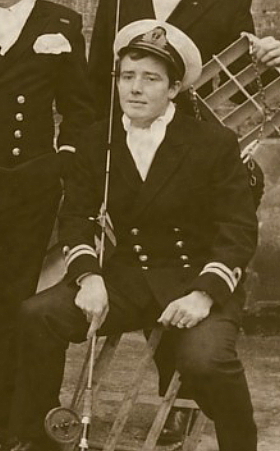
Colin in 'vintage' LMCDO '79 course photo
Colin joined the Royal Navy in 1973 and qualified as an MCD Officer on LMCDO '79 with Bill Chambers, Tim Curd, Allan Rankin, Andy Ryan, Gordon Stamp, Dennis 'Taff' Sweeney, Colin Welborn and Svenn Olav Kalvo RNoN. He served in HMS Minerva (1974), HMS Brereton (1975/76), HMS Berwick (1977), HMS Juno (1978/79), HMS Wilton (1980), HMS Iveston (1981 to 1983), HMS Vernon (1984), on exchange with the Canadian Navy at the Experimental Diving Unit of DCIEM (Defence & Civil Institute of Environmental Medicine) in Toronto (1985 to 1987), COMMW (1988/89), SMOPS Nelson ex-HMS Vernon where he set up operator training for the Sandown class minehunters (1990 to 1992)), RNR Sussex (1993) and the staff of SofD (Superintendent of Diving) in 1994.
Colin (top left) starting SAT diving course at HMS VERNON in 1985
Colin (sitting fourth right) with other Minewarfare Section staff outside wardroom
at HMS Vernon in 1991
After opting for compulsory redundancy, Colin left the RN in 1994 and resided for many years in Phuket, Thailand where he indulged his passions for golf, fishing, dogs and motorcycling.
Colin indulging his favourite pursuit in Thailand
I am sure all members of our community will join me in extending our sincere condolences to Colin's family and friends.
26 Jan 19 -- Advance Australia Fair
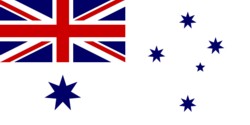
Happy Australia Day to all our mates down under (see entry for 15 Apr 18 in News Archive 62).
25 Jan 19 - Capt Peter Laughton MBE RN assumes Command of Fleet Flagship
Congratulations to MCDOA memberr Peter Laughton on assuming Command off HMS Albion on the 15th of this month.
Peter has kindly sent this message:
"Thank you Rob and good to hear from you.
I feel extremely proud and honoured to command the Fleet Flagship. I also hope it sends a very powerful and motivating message to our more junior MCDOs - there are no limits when you join the Branch! And of coursee [MCDOA President] Roger Readwin (we were both on LMCDO '98A) assumes Command of BRNC in Sep - a first for the Branch!
Will drop you a note in the next few weeks!
Peter"
24 Jan 19 - Minewarfare & Diving Heritage: HMS Vernon
These aerial views of HMS Vernon have recently come to light.
The first image shows HMS Vernon and Old Portsmouth in 1965. Three TON class MCMVs are berthed on Maintenance Jetty, another in Vernon Creek and a fifth on Marlborough Pier. The RCT Tank Landing Craft 'Ardennes' and 'Arakan' are berthed on the Army's Gunwharf Jetty between Vernon and Portsmouth Harbour station.
The second image shows HMS Vernon in 1984 withh the newly completed IOW car ferry terminal, previously located at the bottom of Broad Street in Old Portsmouth. Three TON class MCMVs are berthed on Maintenance Jetty. Scott Block, Creasy Centre, Creasy South and Creasy East had been built since the first photo was taken.
23 Jan 19 - RN Fleet Effectiveness Awards
Hearty congratulations to MCM2 Crew 2 (HMS Middleton) for winning the MCM Effectiveness Trophy and to MCM1 Crew 5's CD Element (HMS Blyth) for winning the Fleet Diving Unit Trophy.
The full list of awards can be seen in this article on the RN website.
21 Jan 19 - SDU1 detonates mine off South Devon
The Devon Live website contains this article, including video, of yesterday's disposal by members of Plymouth-based Southern Diving Unit 1 (SDU1) of what looks suspiciously like a German GC ground mine trawled up by a Brixham-based fishing vessel.
(Images courtesy of Richard Michael)
.jpg)
Members of SDU1 had attended another EOD incident in Brixham on Saturday.
19 Jan 19 - RN Minewarfare & Diving Hertage: AB Sidney Thomas Wiles and Lt Cdr Leslie Gordon Gutteridge OBE RN
I receive and answer many requests for information from the descendents of people associated with RN minewarfare & diving. This is a recent example of particular interest:
"I am trying to find out a little more aboutt the early life and service off my father, Sidney Thomas Wiles. All I have is a certificate of proficiency with the details as written in the subject heading, signed by Commanding Officer A R Alston, and a typewritten letter with the following details:
Naval Party 2444 Dunkirk 19th January 1945. Signed by Lieutenant RNR, Commanding Officer.
I don’t have any other information and wonder whether you might be able to point me in the right direction or whether any of your members may have known him.
Thank you in advance..
Joanna Playfordd
(formerly Joanna Wiles)"
This was my initial reply::
"Hello Jo,
Have you applied for a copy of your father’s service record? Advice is available here:
www.gov.uk/government/collections/requests-for-personal-data-and-service-records
NP (Naval Party) 2444 was the second ‘P’ (Port Clearance) Party of divers intended for deployment to the Far East but the Japanese surrendered before it was ready. It was based at HMS VERNON(D) at Brixham Aug/Sep 1945 and Calais and Dunkirk from Oct 1945 until its disbandment in March 1946. The (D) after HMS VERNON stood for ‘Dartmouth’ where the unit’s accounts were held.
The acknowledged source of information about the formation, training, role and work of the ‘P’ Parties is ‘Open the Ports – The Story of the Human Minesweepers’ by J Grosvenor and Lt Cdr L M Bates RNVR. This is an excerpt:
“…There was one port in western Europe which had so far not been touched by "P" Parties. This was Dunkirk, which sent a sudden call for assistance before the clearance of Bremen had been quite completed. It seemed that twenty-seven mines had been reported laid by the enemy and all trace of these had since been lost. Gutteridge was despatched with a small operational Party (No. 2444) and with a young officer, newly trained at Brixham, Sub Lt W O [Walter Owen] Trought RNVR* to assist him.
The work proved very tiresome and difficult because of the swift tides scouring the harbour entrance and the bad, wintry weather. The Party were helped by a few German divers and seamen who collectively had some half-dozen words of English. If anything, the British Party knew rather less German. But Petty Officer Cook, by gesticulation and by sheer will power, soon had the Germans laying jackstays with something of the precision of a "P" Party.
Searching at Dunkirk was to drag on until March 1946. Four mines were found and it could only be presumed that the others reported had sunk too deeply in the mud to be traced.
Cdr Aubrey Rowland Alston OBE RN, who signed your father’s certificate, was gazetted for his appointment as an OBE (Officer of the Most Excellent Order of the British Empire) on 11 July 1940 “…in recognition of distinguished services during the War.” He was appointed to HMS VERNON(P) in Portsmouth on 27 Oct 1944 for service at HMS VERNON(D) following service with the Admiralty's Director of Torpedoes and Mining..
Lt Cdr Leslie Gordon Gutteridge OBE FRSA RN had a long and distinguished career both during and after the Second World War. I never met him but I have a file of his correspondence and I knew many of his RN friends and colleagues.
Please read about the ‘RN Clearance Diving Branch’ in the MCDOA website’s Branch History section. There is a search facility on the website’s ‘Home’ page.
Don’t hesitate to contact me if you have more questions.
Best wishes,
Rob Hoole"
* Of note, Sub Lt Walter Trought RNVR went on to serve at HMS Mount Stewart, the Naval Special Operations training base at Teignmouth in Devon, from 30 December 1945. This was where SOE (Special Operations Executive) instructors trained small boat personnel, destined for employment in Europe and the Far East, in weapons, contact drills, fieldcraft and CQB (Close Quarters Battle), usually in groups of eight men at a time. The establishment paid off on 28 February 1946.
I subsequently received this response from Jo..
"Thank you very much for the information. I will make the application for his records and have a read of all the information/links you have sent.
The letter I have is dated 19th January 1945 DUNKIRK. It is almost like a personal reference. I have attached it just for your interest.
Best Wishes,
Jo"
After examining the letter, I was able to send Jo this information:
"Thank you, Jo.
Your letter is signed by Lt Leslie Gordon Gutteridge RNVR (later Lt Cdr RN) who died on 26 May 2002 at the age of 81.
Gordon Gutteridge was a senior founding member of the 'P-Parties' that cleared North African and European ports of ordnance in the wake of the German withdrawal at the end of WW II. As such, he was a direct forebear of the RN Clearance Diver branch.
The following abbreviated extracts from Rear Admiral Nicho Poland's book,, 'The Torpedomen - The Story of HMS Vernon 1872-1986', and other sources, describe how Gordon Gutteridge made such a significant contribution to RN clearance diving and mine disposal.
During the 8th Army's advance from El Alamein, a small team of mine disposal ratings under Lt (later Cdr) George Herbert Goodman GC MBE RNVR and Lt Gordon Gutteridge RNR were detached from Rear Admiral (Alexandria)'s staff to be the first naval personnel into each of the newly occupied Western Desert ports. At Bardia, Sollum, Mersa Matruh and Benghazi they were faced with booby traps, tank and anti-personnel mines, demolition charges, depth charges and naval mines. Being without diving apparatus, they were obliged to swim down to investigate underwater hazards. At the end of the only serviceable jetty at Sollum, they found two depth charges placed in about 15 feet of water. Gutteridge, swimming down, discovered two wires leading into the silt and ending in a red cover plate at one end. On removing the coverplate, the mechanism inside started to tick but when Gutteridge pulled on a chrome plated spindle, the ticking stopped. Becoming short of breath, he surfaced and clambered up a rusty ladder before covering one hundred yards in record time. The expected explosion did not take place and the depth charges were successfully removed. At Tobruk, Gutteridge and his team were sent to investigate a 'ticking' at Navy House. They searched room by room and cellar by cellar. It was a wet, smelly and lonely business. Eventually, the ticking was traced to a halyard block on the flag pole. Moving in the wind, it was striking the mast at a rate of 60 times a minute. At Benghazi, Gutteridge and his driver were caught by a booby trap. Both received second degree burns which required treatment in a field hospital. They then drove the 600 miles back to Alexandria.
In the Spring of 1945, Gutteridge was second-in-command of Naval Party 1571 under Lt Cdr G Gosse RN. NP 1571 was one of six 'P-Parties' that had cleared Caen, Boulogne, Calais, Brest, Dieppe, Le Havre, Rouen, Antwerp, Terneuzen, Zeebrugge, the South Beveland Canal and Flushing. The procedure was for the clearance divers to locate a mine and then report the find to the officer who then dived to render the mine harmless or to explode it if it was safe to do so. On one occasion, a 'G' type pressure mine was discovered resting on a body. Gosse, tended by Gutteridge, worked in two feet of mud in the dark water to remove the primer and bring the mine to the surface. Later in 1945, Gutteridge and eight divers were lent to the French Navy to assist in removing mines from France's third largest harbour at Dunkirk. Since the French had little or no mine clearance capability, Gutteridge suggested that a large British 'P-Party' should be formed to perform the task. The Admiralty reacted positively and NP 2444 was commissioned with a complement of 4 officers, 1 sick berth attendant, 1 cook and 40 divers. All the personnel were qualified to dive. When the 'P-Parties' were disbanded in Mar 1946, their eventual bag was 219 mines, 121 explosive charges of one type or another and one V2 rocket, all without the loss of a single individual.
After the war, the remnants of NP 2444, led by Gutteridge, formed the core of the RN's clearance diving capability based at Lochinvar, ridding UK waters of remaining German and British mines. In 1951, clearance diving training moved from Lochinvar to Vernon (home until then of the deep divers) where a Clearance Diving School was established. Gutteridge moved to UCWE (Underwater Countermeasures & Weapons Establishment) at West Leigh House near Havant, together with the Experimental Diving Trials Team, to concentrate on the scientific study of diving problems while working in close liaison with the Superintendent of Diving at HMS Vernon. The appointment to this post of Cdr R F Harland from Lochinvar confirmed a new era in which scientists, engineers, medical specialists and divers began to work in harmony. As Gutteridge put it, "Old hostilities wore away, new blood was introduced and only healthy competition remained." For a while, Gutteridge was assisted by the legendary Cdr John Ouvry who had been recalled to write a new manual on rendering mines safe but problems were encountered when Cdr Lionel 'Buster' Crabb was recalled to service and promoted over Gutteridge's head to command the Experimental Clearance Diving Team. This was intended to allow Gutteridge to concentrate on research work but it had unfortunate effects as Crabb, in Gutteridge's words 'distrusted scientists and avoided all things scientific'. Together with Lt Cdr 'Uncle' Bill Filer who went on to head the Acceptance Trials Team in Vernon and the Diving Trials Unit at Alverstoke, Gutteridge oversaw the development and introduction into service of new diving apparatus, the first inflateable dinghy (Gemini), underwater comms, mine investigation and render safe techniques and equipment. He was also responsible for the formally registered design of the watch face of the Rolex Perpetual Oyster which became a standard issue to RN divers; the first watch to reach the top of Mt Everest and the first to go into space.
In 1954, Gordon Gutteridge and Bill Filer were invited to the USA where they demonstrated the Mine Recovery Outfit (including automated mine recovery lifting bag), shaped charge render safe techniques, non-magnetic tools, the diving watch, underwater radiography and mine dismantling techniques. In return, they inspected new and experimental diving equipment. They were most impressed by the 'wet and dry' chamber for conducting diving experiments down to 500 ft under controlled conditions. Some eight years later, this equipment was introduced into the RN. While in the USA, Gutteridge and Filer also visited the Mine Countermeasures Base at Charleston where they 'flew' the Aerojet Corporation's Minisub; a free-flooding diver's aid to mobility. It had two speeds: 3 1/2 kts and 7 knts. Gutteridge obtained a similar minisub for UCWE which underwent trials at Horsea Island and at Falmouth. The trials were disappointing, and the RN decided to concentrate instead on the towed diver search which had also been observed during the American visit.
In April 1956, Gutteridge was one of the last people to see Lionel ‘Buster’ Crabb before his disappearance in mysterious circumstances during the visit of the Soviet cruiser Ordzhonikidze to Portsmouth with Bulganin and Kruschev and he provided a detailed description of the events leading up to the incident. In January 1957, Gordon Gutteridge was appointed an OBE for leading a UCWE team that rendered safe a German mine found buried in mud and rubbish underwater in a heavily populated area of London's West India Docks. The attached photo shows Gordon Gutteridge (centre) as OIC of the FECDT (Far East Clearance Diving Team) in Singapore in 1957.
I daresay he retired from the RN as a Lt Cdr soon afterwards because I have no further information on him after this.
Best wishes,
Rob"
This was Jo's response:
"Thank you so much for all this amazing information. I’m looking forward to getting my dad's records to try to understand the timeline and how long he served. The letter from Gordon Gutteridge is dated Jan 45 Dunkirk so I am trying to work out whether my dad was present or whether it was written and forwarded to him because he married his first wife sometime between April and June of 1945.
Just as a little background, my dad was born in 1921 in Mayfair but grew up in Mile End, East London. He was one of five children. I think all of them, excluding his sister, served in the forces at one time or another but I don’t know all their names.
My sister says he chose the Navy because he liked the uniform! He married his first wife in 1945 and had his first daughter. After the death of his wife he met my mother (22 years his junior!) and they had me in 1980. He was 61 at the time and he died in 1986.
I know very little about his life as my mum passed ten years ago and the only things I have are the letter from Gordon Gutteridge and a certificate of proficiency. My half sister also knows nothing more than I do about his time as a diver.
Best Wishes,,
Jo"
9 Jan 19 - New minewarfare history book now available
Your humble Webmaster's first consignment of 'Nightraiders - US Navy, Royal Navy, Royal Australian Navy and Royal Netherlands Navy Mine Forces Battling the Japanese in the Pacific in World War II' has arrived from the USA (see entry for 15 Dec 18 in News Archive 64)..
This is the second volume of the trilogy that started with 'Home Waters''andd is co-authored byy Cdr David Bruhn USN and Yours Truly (Rob Hoole). It is available from the American publisher, Heritage Books, at a cost of $40 plus P&P to the UK. Alternatively, I am selling signed copies for £30 (including P&P within the UK and a £10 donation towards the installation of the Vernon Minewarfare & Diving Monument at Gunwharf Quays). Email me via my Webmaster address for further details..
Signed copies of 'Home Waters - Royal Navy, Royal Canadian Navy, and US Navy Mine Forces Battling U-Boats in World War I', the first volume of the trilogy, are still available at the same price and conditions but only £26 if ordered with other book(s) as I can combine P&P. Contact me for further details.
So far, the proceeds from personal sales have added £1,000 to the fund with more on the way.
Co-authors David Bruhn and Rob Hoole with our
respective wives in San Francisco in 20144
The third volume of the trilogy, titledd 'Enemy Waters'', will deal with minewarfare (minelaying, minesweeping and naval bomb & mine disposal at sea and on land) against Germany and Italy during the Second World War and is due to be released later this year. Note that every single penny collected by Project Vernon, plus 25% Gift Aid where applicable, goes towards the campaign to design, install and maintain the Vernon Minewarfare & Diving Monument. The project is a registered charity staffed entirely by unpaid volunteers who have raised over £250,000 to date.
8 Jan 19 - Latest LS&GC and VRSM awards
Congratulations to CPO(MW) L S Cooke, CPO(MW) R R Malcolm, PO(MW) J W Klein and LS(D) S J Dooley on being gazetted for the award of the Naval Long Service and Good Conduct Medal and to LS(D) S Cotterell RNR on being gazetted for the award of the 1st Clasp to the Volunteer Reserves Service Medal.
5 Jan 19 - RN Minewarfare & Diving Heritage: HMS Vernon's Mining Trials Tank
No one visiting HMS Vernon or its neighbourhood between 1917 and 1996 could have ignored the prominent Mining Trials Tank. With its grey, steel-clad working platform towering 94 ft over Vernon's walls, it resembled a giant water storage tank, which of course it was; 55 feet of captive fresh water in a riveted steel cylinder supported by a steel gantry, topped by a rectangular work-top with all 'mod cons'.
Camber Docks in the 1960s with HMS Vernon's Mining Trials Tank
towering over Vulcan Building upper left
Originally supplied by the USA during the First World War to help resolve married unit failures in the North Sea mine barrage, the tank served the Royal Navy mine designers well until work on underwater weapons was concentrated at Portland in 1959. Many generations of mines were proved and improved by trial launches into the tank, coming to rest on the 'mat' to be observed through the ports on the various deck levels. Submerged minelays, simulating launches from submarines, could be conducted via an airlock halfway up the structure.
No. 21 (Vulcan) Building, with its still intact clock tower, and part of
the Mining Trials Tank during an ARP exercise in February 1939
In March 1941, the tank suffered bomb damage during the Blitz on Portsmouth.
HMS Vernon's Mining Trials Tank after suffering
bomb damage in March 1941
In 1943 and 1944 the newly captured Italian oscillating mine was put through its paces in the tank, sinking on launch until its electrically adjusted displacement plunger gave it buoyancy to rise again, only to gently sink from 2 metres depth and oscillate between this datum and 5 metres until its batteries ran down.
HMS Vernon's Mining Trials Tank circa 1955
When the tank passed into the administrative care of the Officer-in-Charge of AEDU (Admiralty Experimental Diving Unit) circa 1959, a major refit was put in hand, the now little-needed mine rails were removed, though a set was preserved on a portable base and stowed away. Changing rooms and shower facilities' were built in, and a diving compression chamber with two compartments was incorporated. New lighting was installed and the tank provided excellent trial service for any underwater equipment which required the chance to operate in water down to 50 ft. A column of sea water 55 ft high and 30 ft diameter was housed in a white painted tank. The water was constantly filtered and had a visibility of about 30 ft.
AEDU schematic of Mining Trials Tank after conversion
The top 10 ft could be heated by steam injection. High pressure air was available at 4,000 psi and the compression chamber had a maximum depth of 200 ft. A moving platform, 'the mat', covered the whole base area and could be moved and lowered under control to any depth, or to the bottom. Alternatively, equipment could be lowered, launched, dropped, or fired into the water, observed or filmed on its performance either from outside through the ports or by diver swimming with the apparatus. External lights were available on the ports at choice and scuttles were spaced every 10 ft on each of the six floor levels.
An experimental trial in progress in HMS Vernon's Mining Trials Tank
Staff divers, underwater photography and closed circuit television were available, and any additional instrumentation could be imported by the user. A six-person lift made access easy and a 2-ton travelling crane raised heavy equipment through an access hatch, from ground or lorry level. The tank was made available for use by all concerns and was loaned to a number of industrial clients engaged on Government contracts.
HMS Vernon's Mining Trials Tank in 1962
This photo appeared in the summer 1966 issue (Vol 13 No 2) of the RN Diving magazine published by the Diving Training section in HMS Vernon and was taken beside the compression chamber at the top of the mining trials tank.
Wendy Williams in old-style SABA at the top off
HMS Vernon's Mining Trials Tank in 1966
The model wearing old-style SABA (Swimmer's Air Breathing Apparatus) was Miss Wendy Williams who worked in AEDU's drawing office at HMS Vernon. She had joined from Bath as a relief for Miss Helen Unstead, a keen sub-aquarist. In a very short space of time, Wendy was X-rayed, medicated and blood-chitted before being pushed in the shallow end. She became fairly competent at 40 feet and was "hoping to go deeper" in the near future.
A 'staple diet' of later years was the routine training of fixed wing and helicopter aircrew in ditching drill. A mock-up cockpit and a helicopter cabin nicknamed the 'Dunker' were installed, and realism added by a gearing which turned the cabin over on entry to simulate the helicopter motion on entering the water. This training was extended to include RAF Search and Rescue crews. Its value was proved over and over and courses included North Sea oil company staff who regularly used helicopters for visiting oil rigs in the North Sea.
Submerged cockpit escape trainer in HMS Vernon's Mining Trials Tank
The aim of the course was to give confidence, overcome fear and demonstrate that properly trained aircrew could make their escape from the most difficult of situations. Helicopter aircrew were briefed fully on the danger of disorientation and had to escape from the module in a variety of situations. It was important that they remained strapped into their respective seats until all movement ceased and then made their escape. This took approximately 10 seconds to accomplish. Divers were in a position within the module to assist in the event of an emergency. The tank could be darkened to simulate moonlight conditions.
'Dunker' submerged helicopter escape trainer in HMS Vernon's Mining Trials Tank
Pathé News film made in 1968 about HMS Vernon's Underwater Escape Trainer
By the end of 1975 over 17,000 people had completed the Underwater Escape Training Course at HMS Vernon and more followed until 1985 when all RN dunker training was consolidated at thee Underwater Escape Training Unit at RNAS Yeovilton.
Aerial view of HMS Vernon in 1977 with the Mining Trials Tank centre right
Aerial view of HMS Vernon in October 1981 with the Mining Trials Tank centre right
HMS Vernon's Mining Trials Tank was demolished in 1998 in preparation for the Gunwharf Quays development.
Aerial view of former HMS Vernon in 1998 after demolition of Mining Trials Tankk
(and Scott Block) to make way for Gunwharf Quays development
3 Jan 19 - HMS Shoreham at sea on New Year's Dayy
Navy News has posted this article on its Facebook page:
While you were possibly nursing a sore head on the first day of 2019, the crew of HMS Shoreham were scouring the depths of the Gulf. The minehunter was on patrol on New Year’s Day, rolling out her dive team for a plunge into the murky but mild waters off Bahrain.
January is the coldest month in the kingdom, which is the hub of RN operations in the Middle East: it gets down (wait for it…) to the low 20s Celsius on land and a similar sea temperature (compared with 4°C ashore and about 9°C in Shoreham’s home of Faslane on the Clyde).
As well as practising the art of neutralising a (dummy) mine during the training exercise, the dedicated seven-strong dive team decided to take the Royal Navy’s standard into the water, unfurling the White Ensign for an ‘underwater selfie’.
The Sandown-class ship is one of four Royal Navy minehunters stationed in Bahrain for three years at a time, supported by a mother ship (currently RFA Cardigan Bay), a battle staff, and a dedicated team ashore at the UK’s new Naval Support Facility.
2 Jan 19 - Happy New Year!!
Happy New Year to all members of our community, particularly to our MCM forces currently deployed overseas. Click on the linked dates to see all associated photos and videos.
Cdr Steve White RN as COMUKMCMFOR
MCDOA memberr Steve Whitee, currently COMUKMCMFOR (Commander UK Mine Countermeasures Force) onn Operation KIPION in the Gulf, has tweeted this message:
1 Jan 2019- Happy New Y ear 19 from RN/RM RFA & Army personnel deployed supporting UK's Mine Counter Measures Force. 13 years deployed. Thanks for your support. We couldn’t do it without you.
HMS Ledbury (MCM2 Crew 6) has tweeted this message mentioning Steve White:
2 Jan 2019 - Four Royal Navy Mine Counter Measure Vessels are at sea on operations over the festive period alongside RFA Cardigan Bay. Cdr Steve White RN visited HMS Ledbury, where he received a Birthday cake! Happy Birthday Boss from HMS Ledbury, HMS Shoreham, HMS Blyth, HMS Brocklesby and COMUKMCMFOR.
HMS Brocklesby (MCM2 Crew 8) has tweeted this message:
1 Jan 2019 - Happy New Year 2019 from HMS Brocklesby and Crew 8. It might be New Year's day but work continues on board M33 here in Bahrain.
HMS Shoreham (MCM1 Crew 7) has tweeted this message:
1 Jan 2019 - For MCM1 Crew 7 deployed on Op Kipion in SHOREHAM, the New Year was seen in on operations.
%20med.jpg)
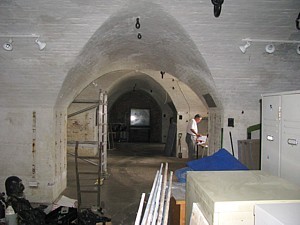

%20med%20lge.jpg)
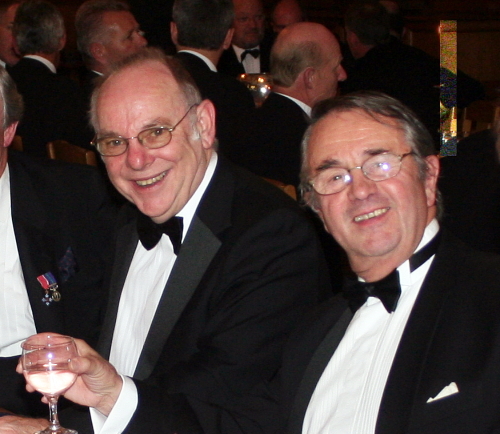

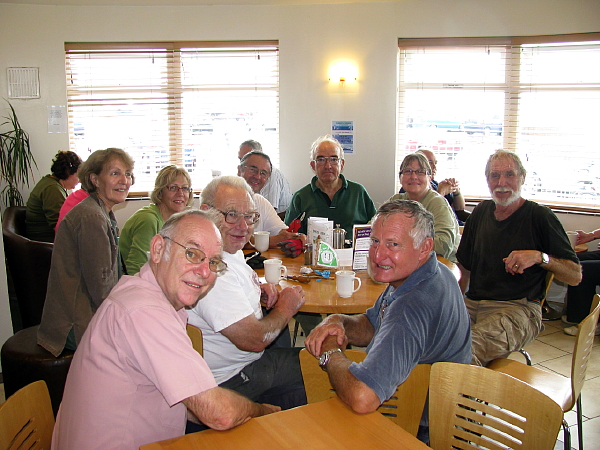

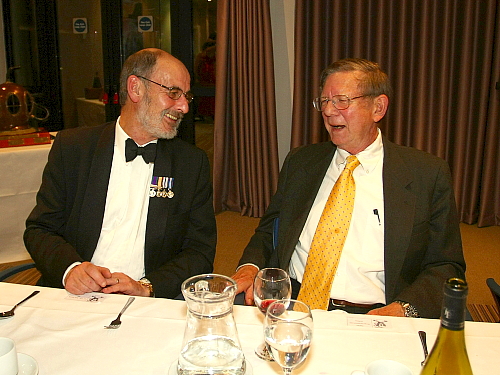
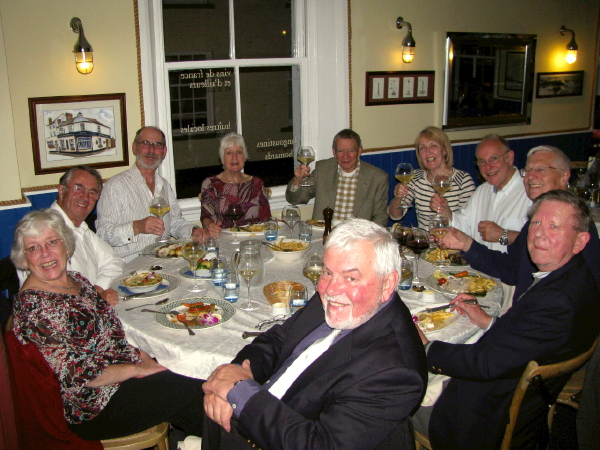
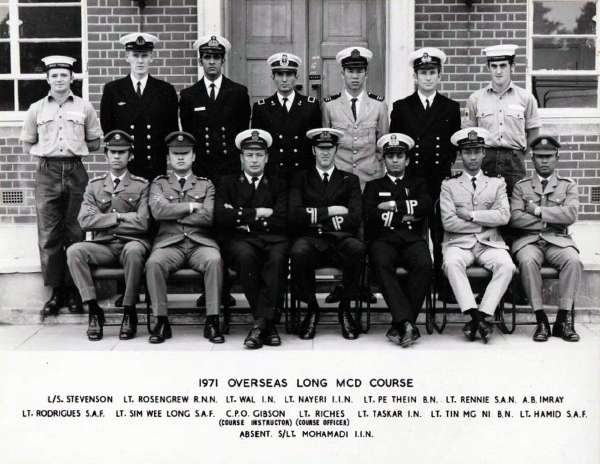
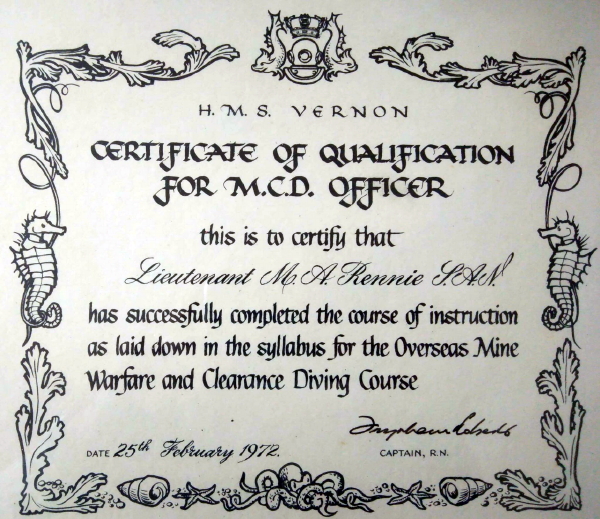


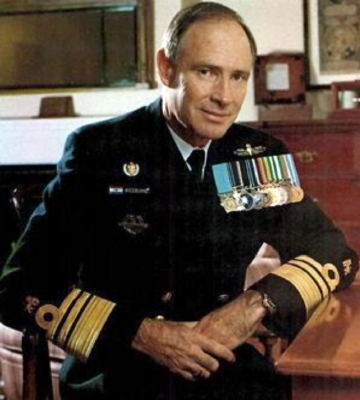

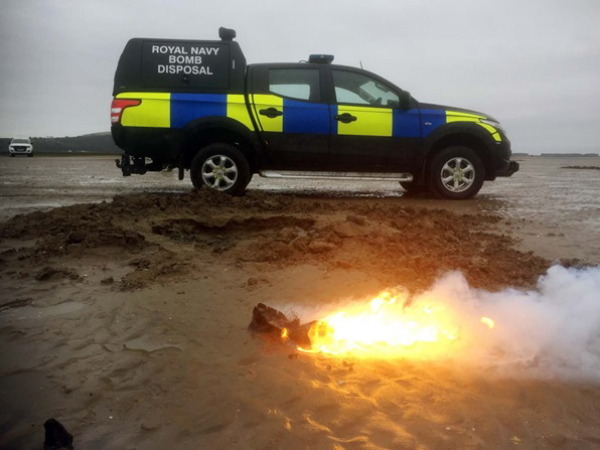
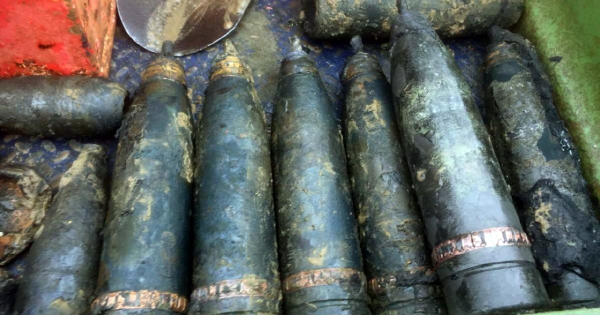
%20med.jpg)
%20med.jpg)
%20med.jpg)
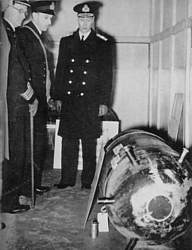
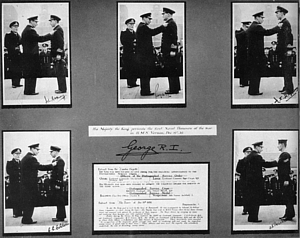
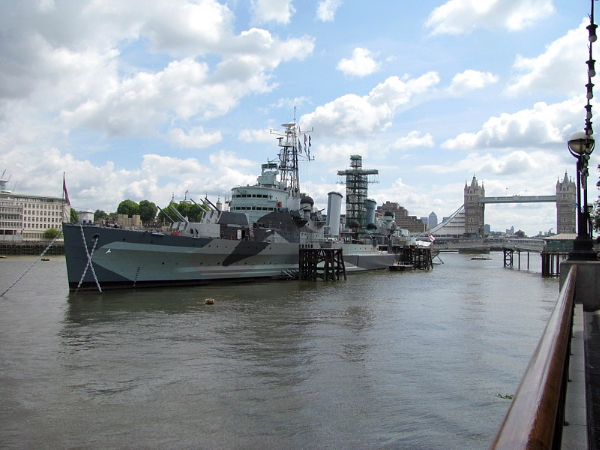
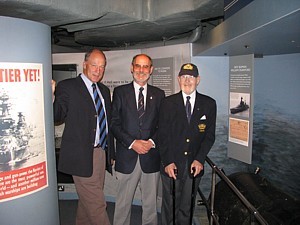
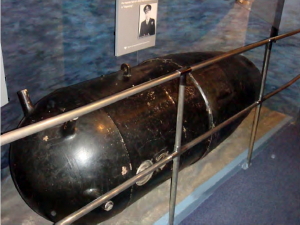
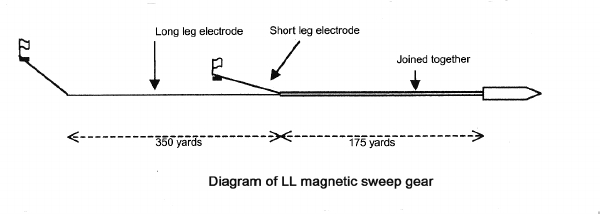
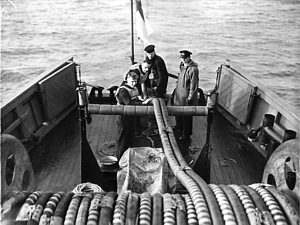
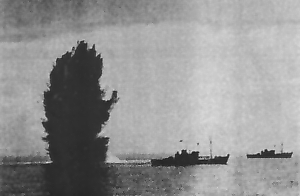
%20med.jpg)
%20med.jpg)
%20med.jpg)
%20med.jpg)
%20med.jpg)
%20med.jpg)
%20med.jpg)
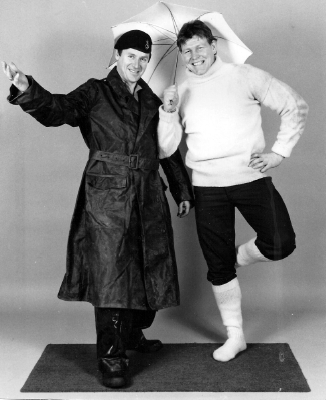
%20med.jpg)
%20med.jpg)
%20med.jpg)

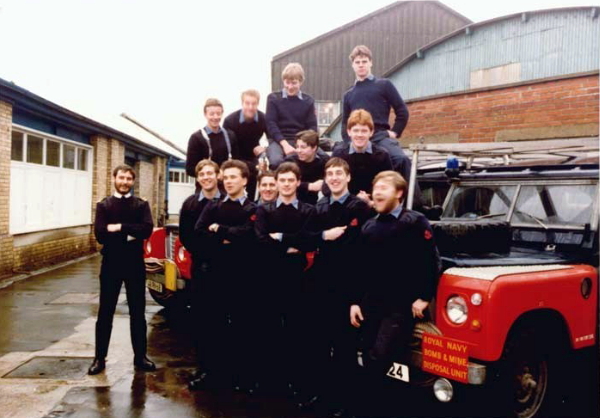
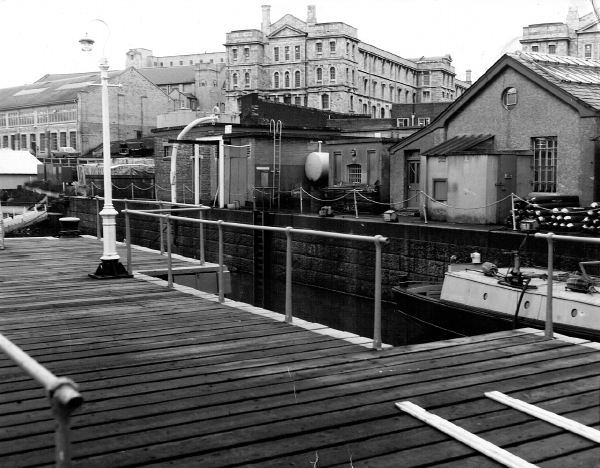
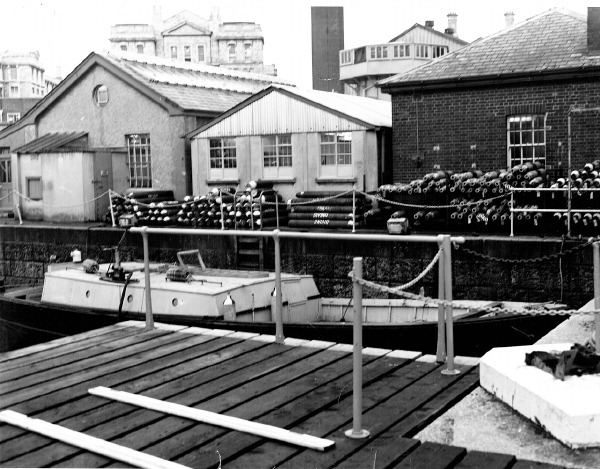
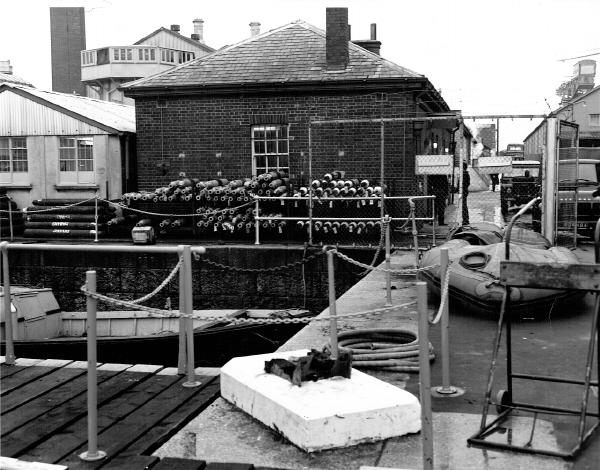
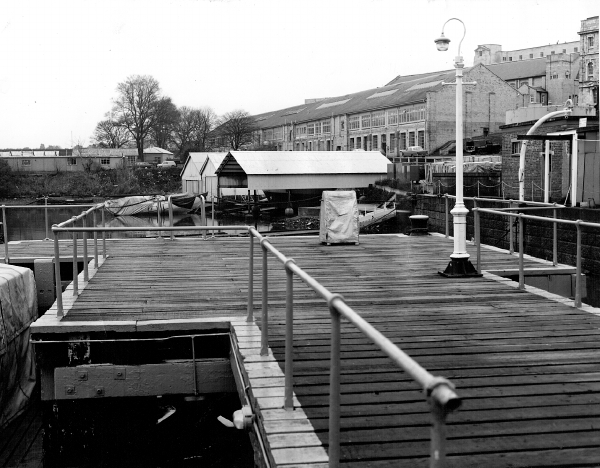
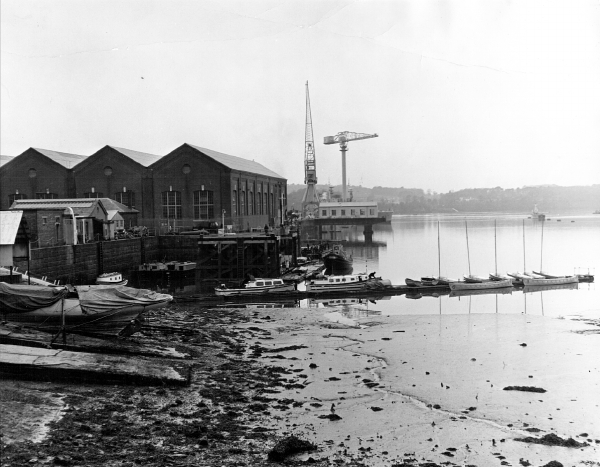
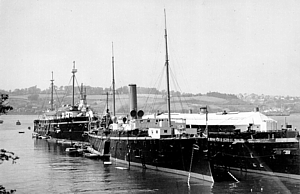
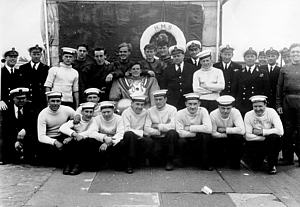
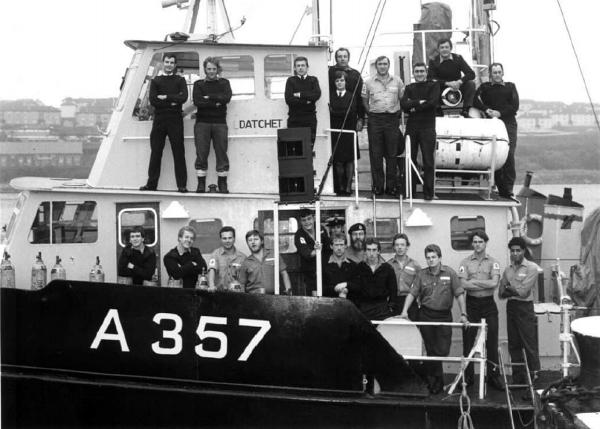
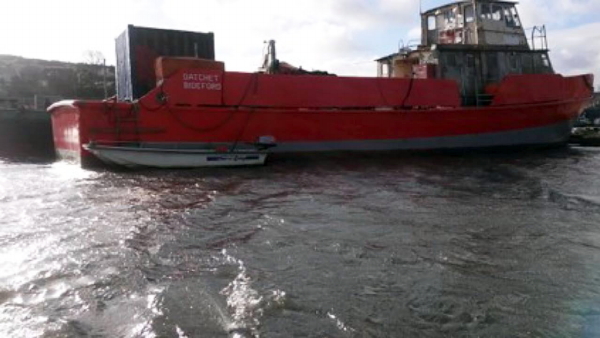
%20med.jpg)
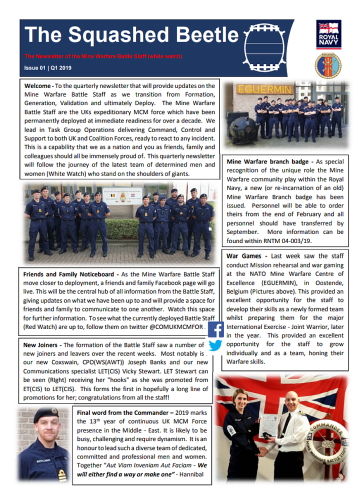
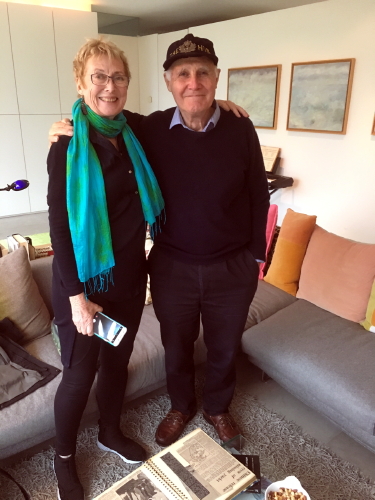
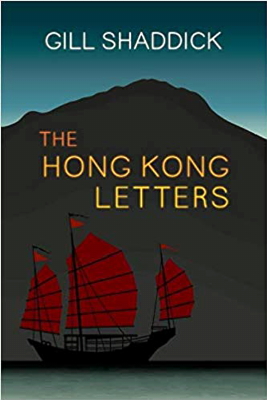
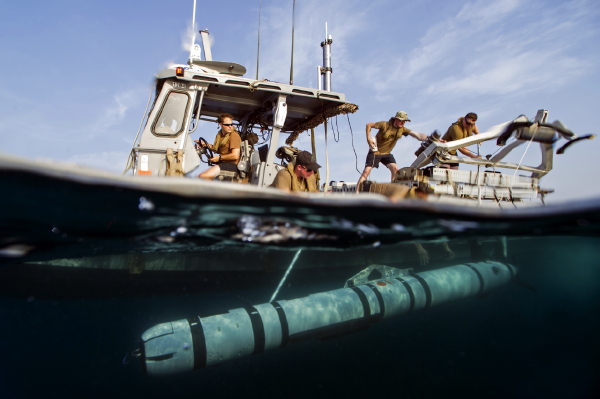
%20med.jpg)
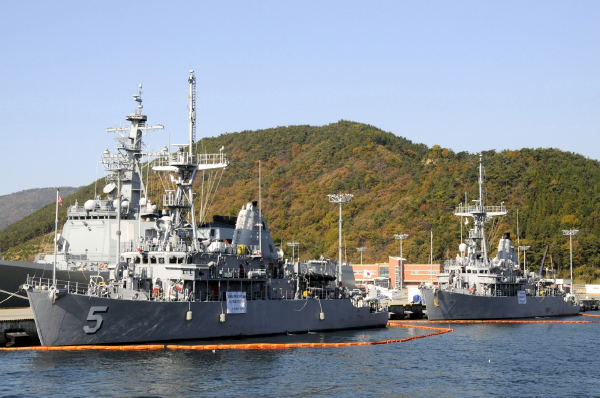
%20med.jpg)
%20med.jpg)



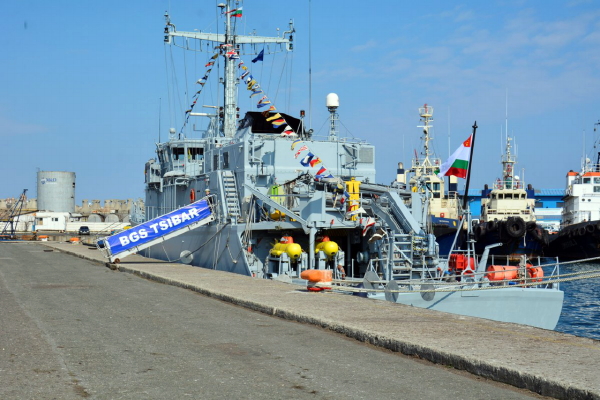
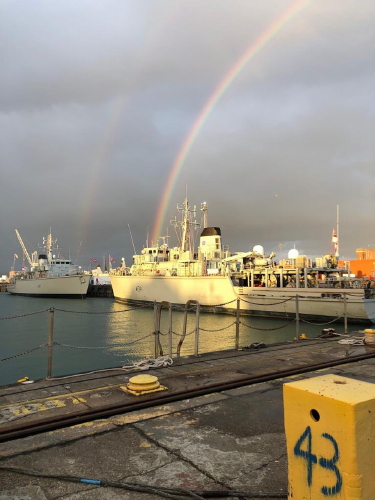

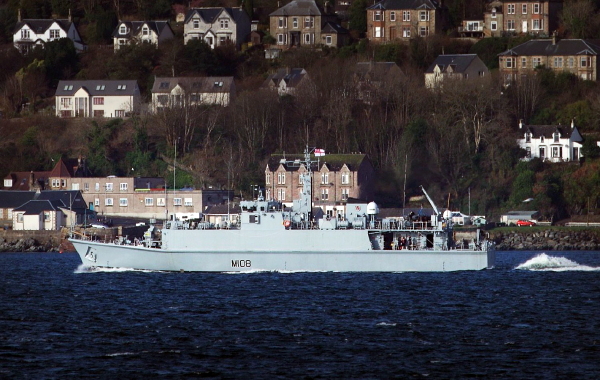



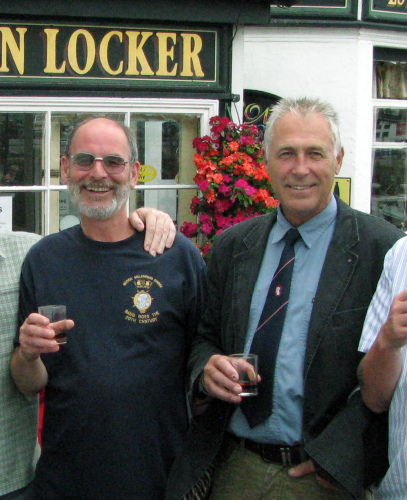
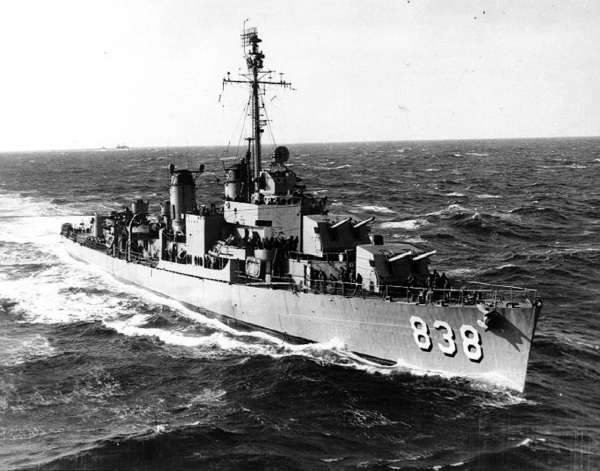
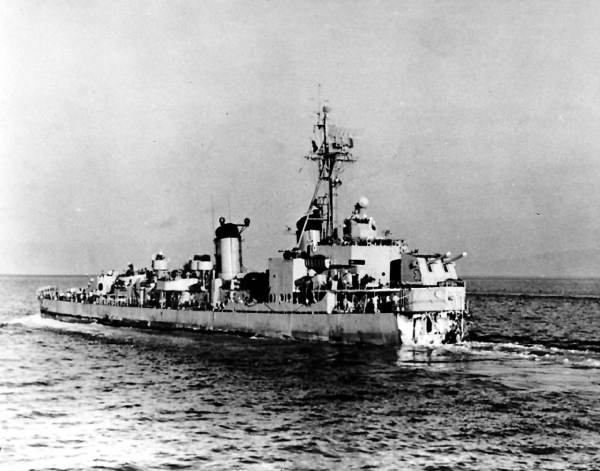
%20med.jpg)
%20med.jpg)
%20med.jpg)
%20med.jpg)
%20med.jpg)
%20med.jpg)
%20med.jpg)
%20med.jpg)
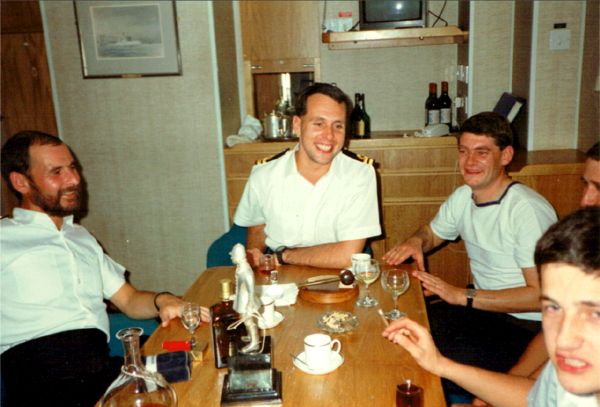
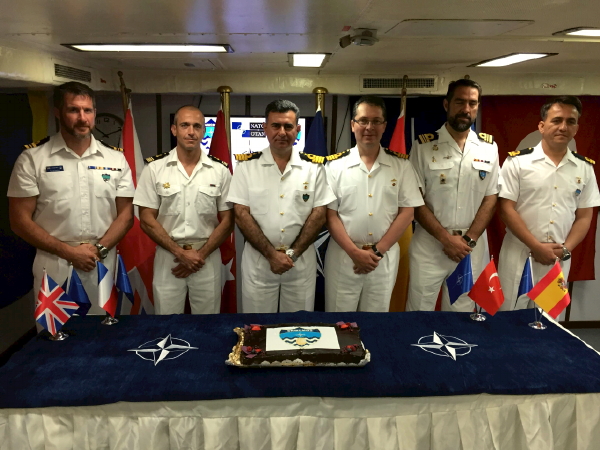
%20med%20lge.jpg)

%20med.jpg)
%20med.jpg)
%20med.jpg)
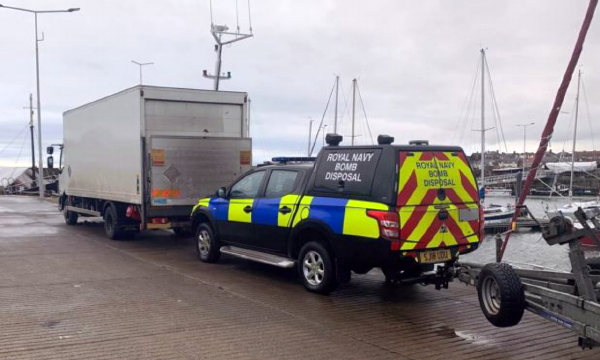
%20med.jpg)
%20med.jpg)
%20med.jpg)
%20med.jpg)
%20med.jpg)
%20med.jpg)
%20med.jpg)
%20med.jpg)
%20med.jpg)
%20med.jpg)
%20med.jpg)
%20med.jpg)
%20med.jpg)
%20med.jpg)
%20med.jpg)
%20med.jpg)
%20med.jpg)
%20med.jpg)
%20med.jpg)
%20med.jpg)
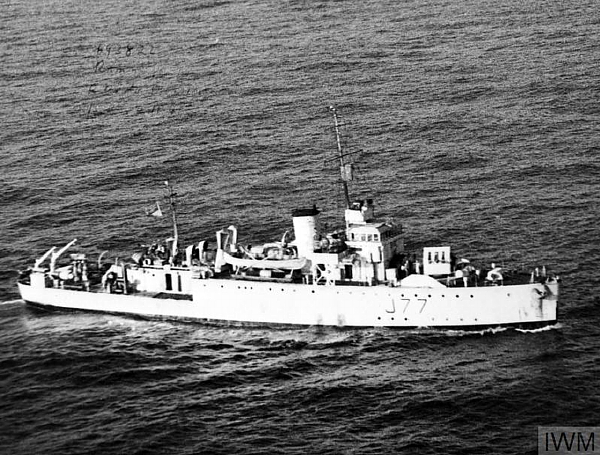
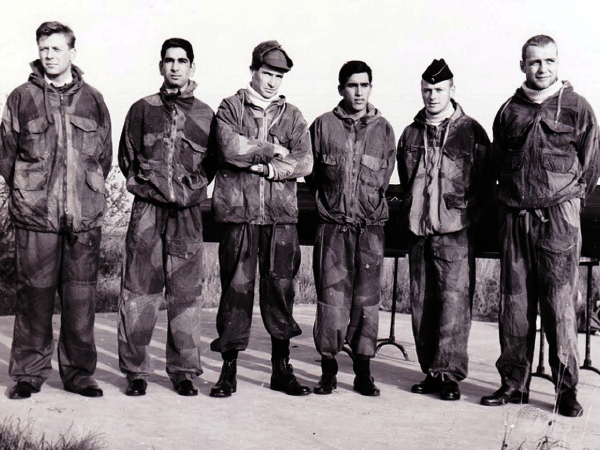
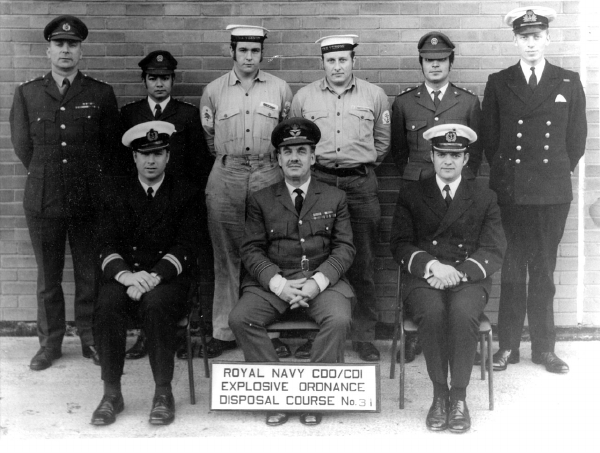
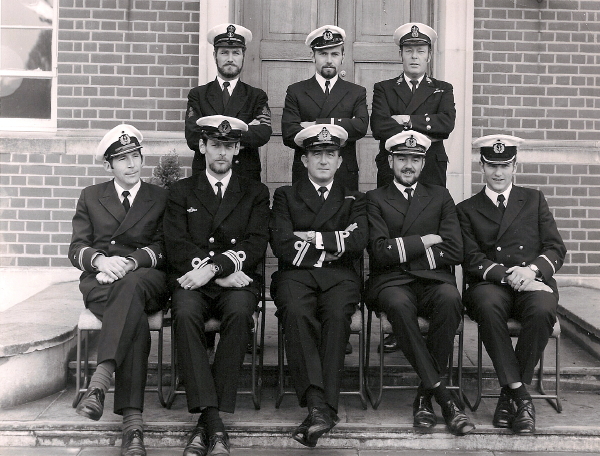
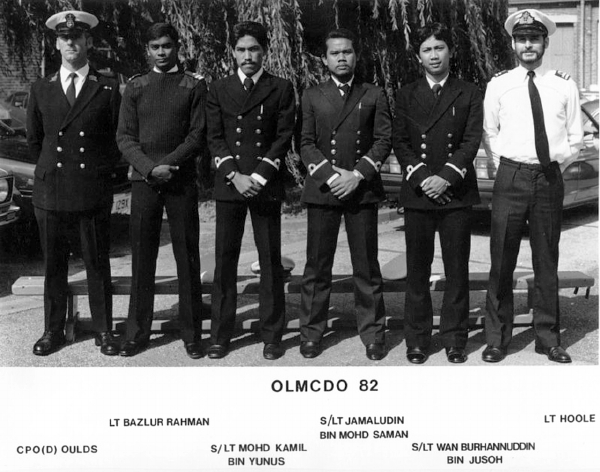

%20med.jpg)


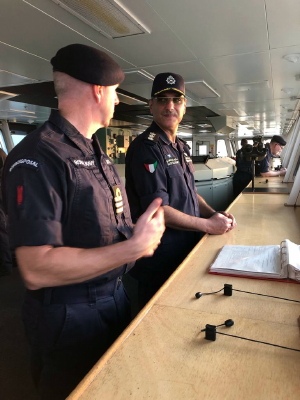
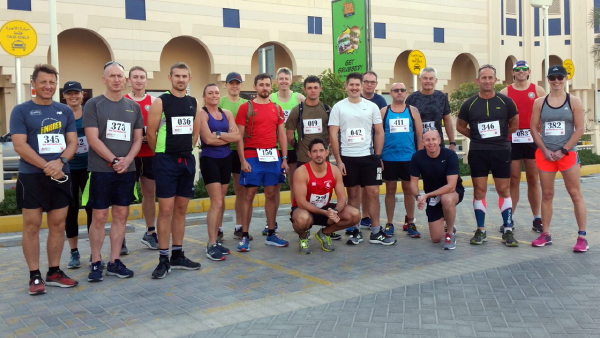
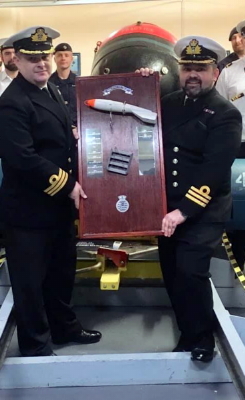

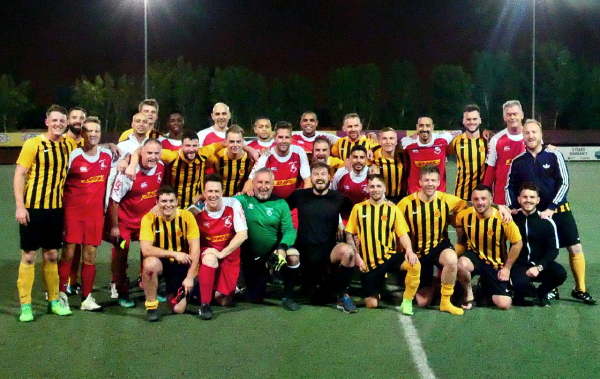
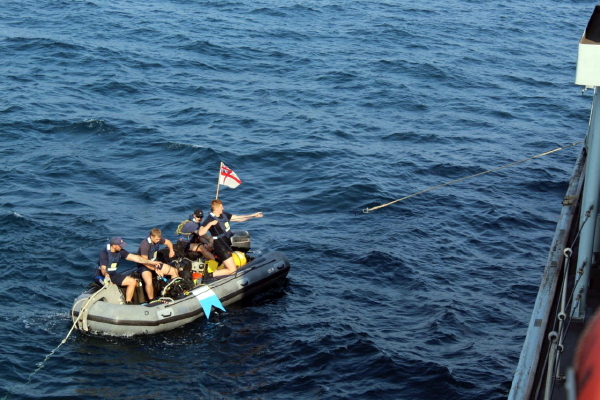
%20and%20AB(MW)%2018-03%20course%20on%20board%20HMS%20Middleton%207%20Feb%202019%20med.jpg)
%20and%20AB(MW)%2018-03%20course%20on%20board%20HMS%20Middleton%207%20Feb%202019%20(2)%20med.jpg)
%20and%20AB(MW)%2018-03%20course%20on%20board%20HMS%20Middleton%207%20Feb%202019%20(3)%20med.jpg)
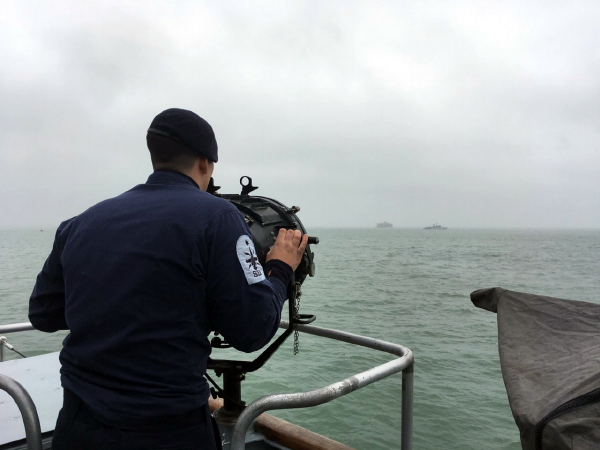

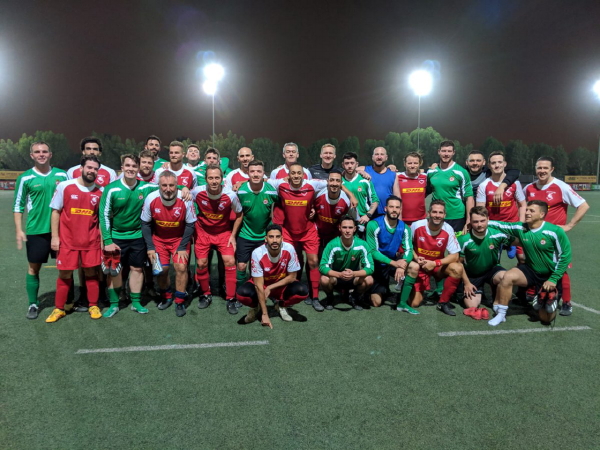
%20med.jpg)
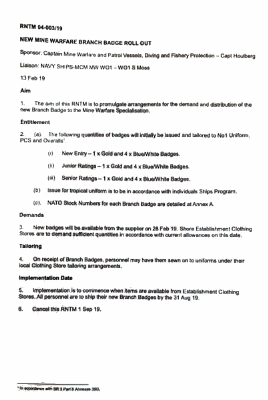
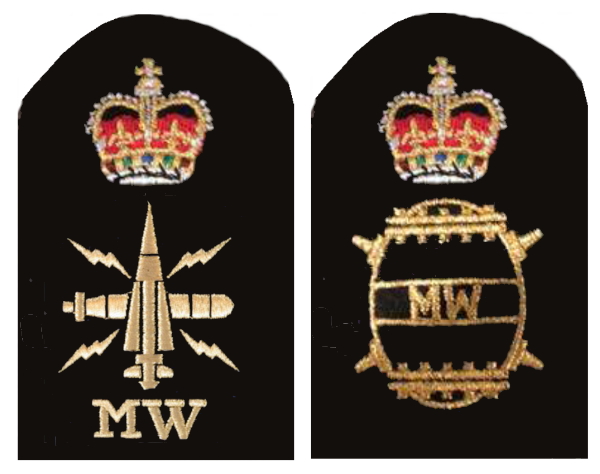
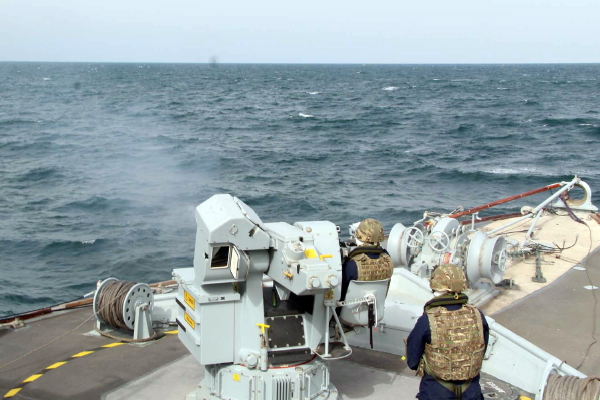
%20Si%20Wharton%20QGM%20Investiture%20Feb%202019%20(a)%20med.jpg)
%20Si%20Wharton%20QGM%20Investiture%20Feb%202019%20(b)%20med.jpg)
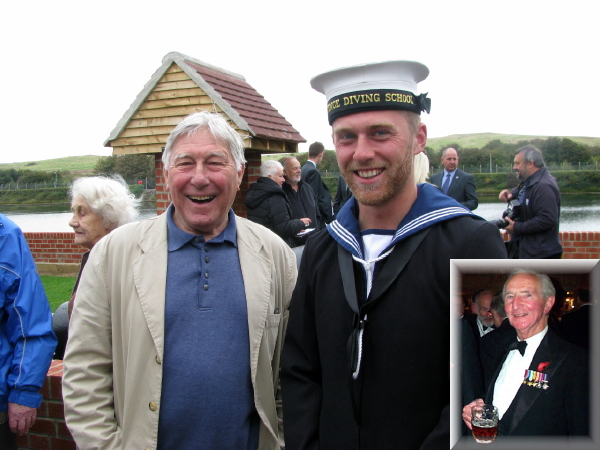
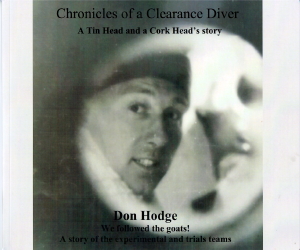
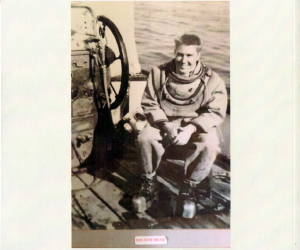
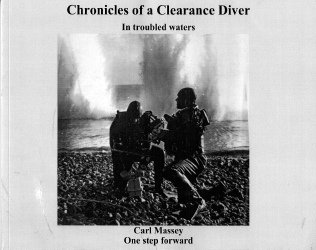


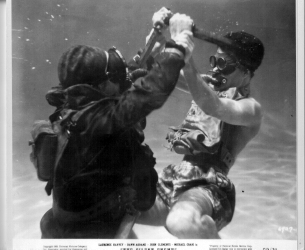
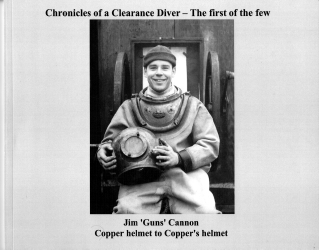
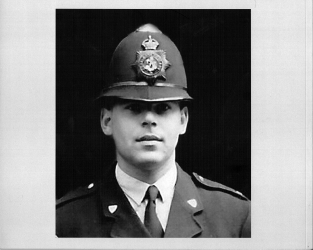
%20Kris%20Fenwick%20Portsmouth%20bomb%20disposal%20Feb%202017%20med.jpg)
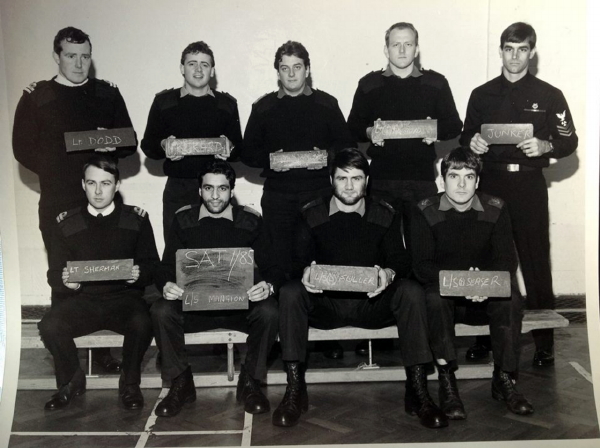
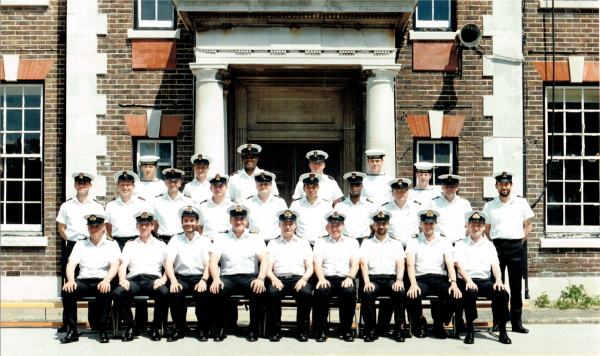
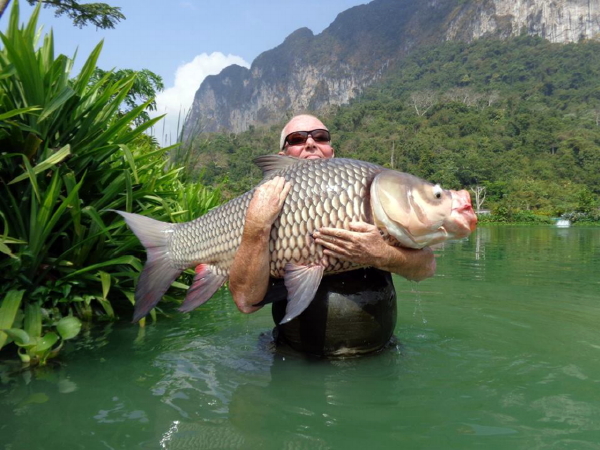
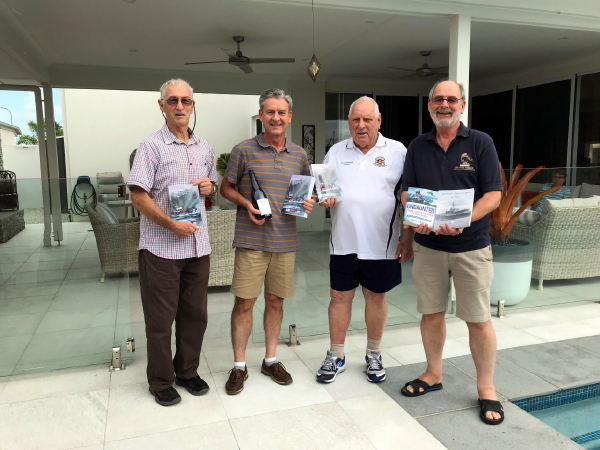
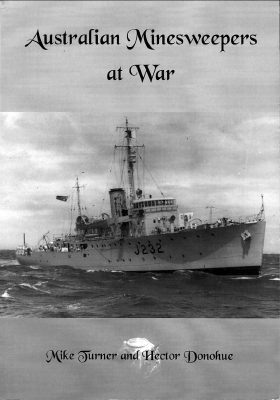

%20med.jpg)
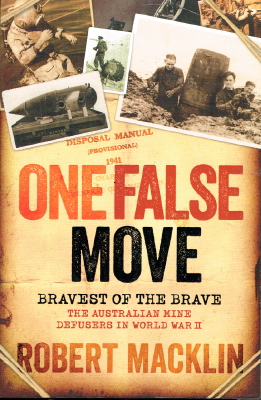
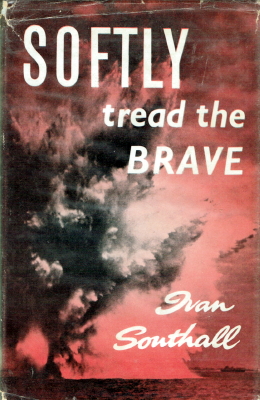
%20med.jpg)
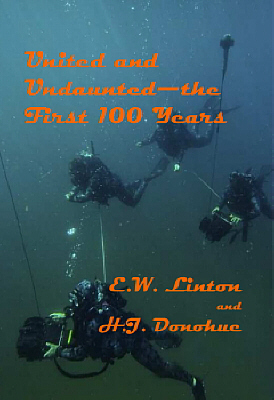
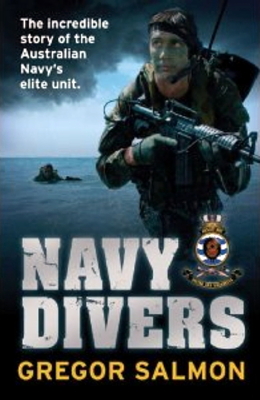
%20med.jpg)
%20med.jpg)
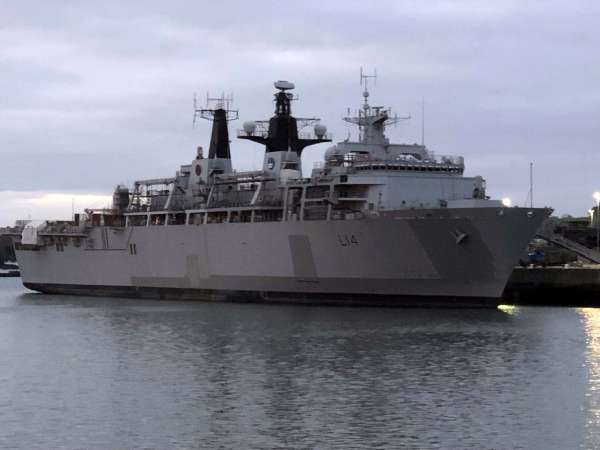
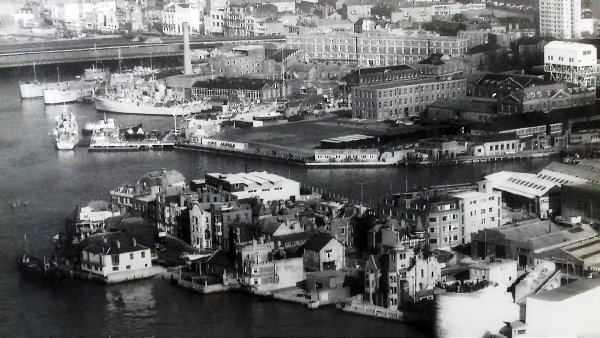

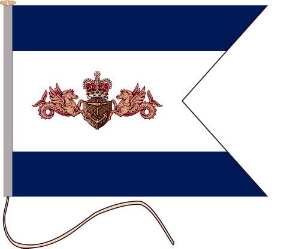
%20med.jpg)
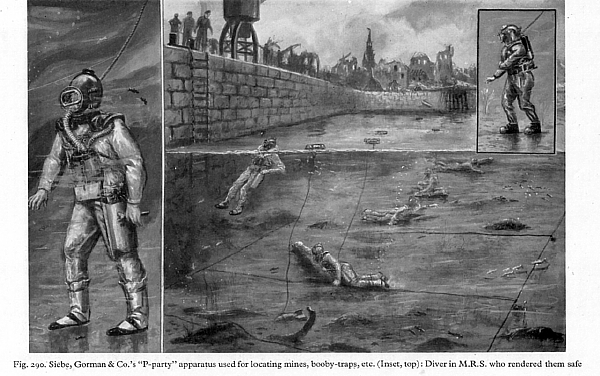
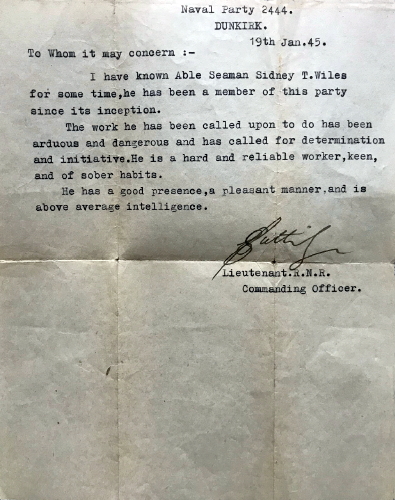

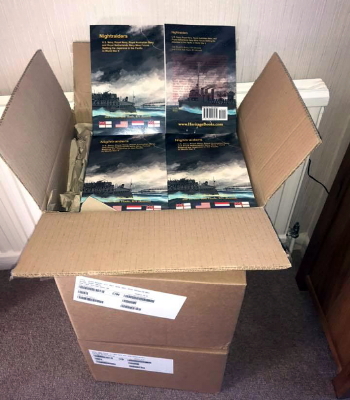
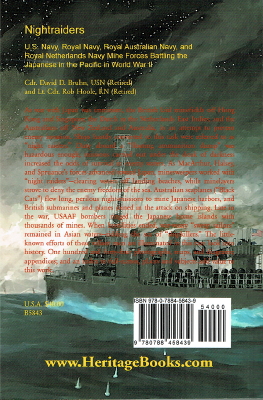

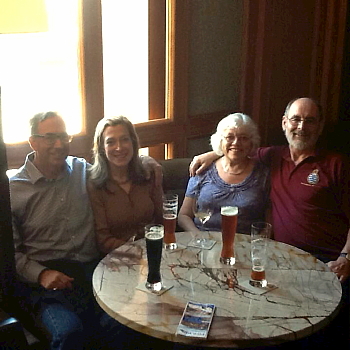
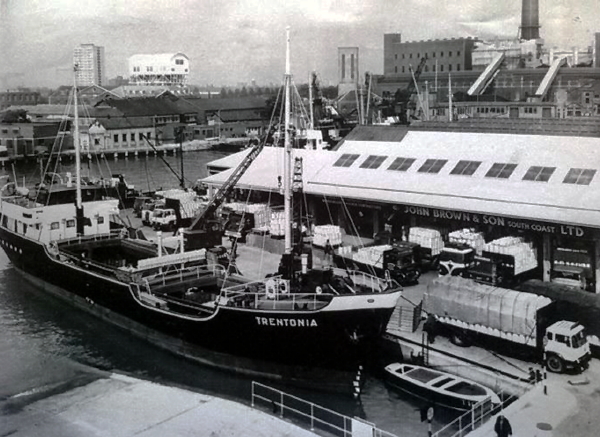



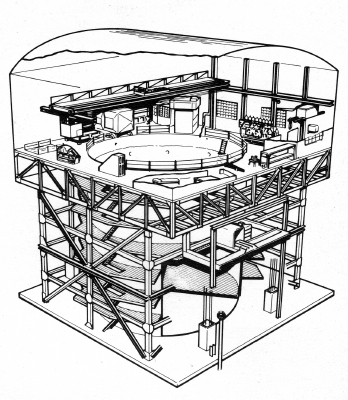
%20med.jpg)
%20med.jpg)
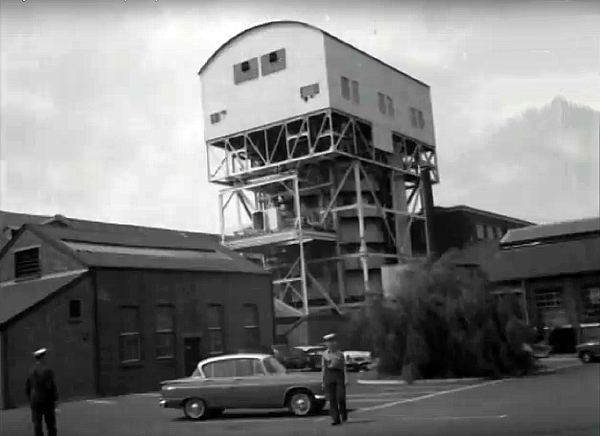
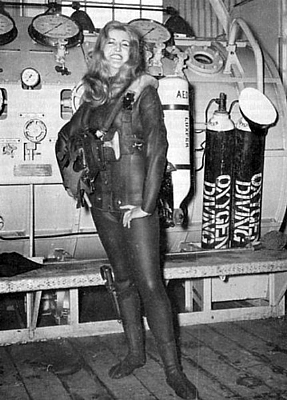
%20med.jpg)
%20med.jpg)
%20med.jpg)
%20med.jpg)



%20med.jpg)
%20med.jpg)
%20med.jpg)
